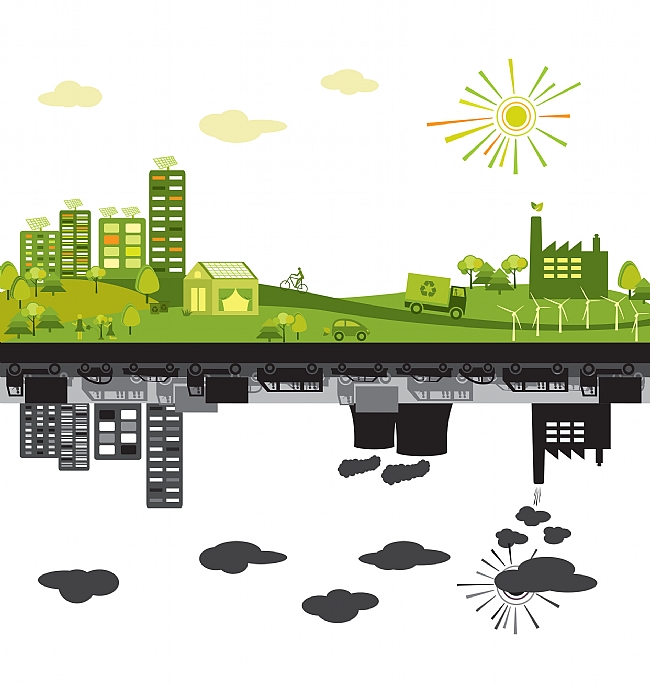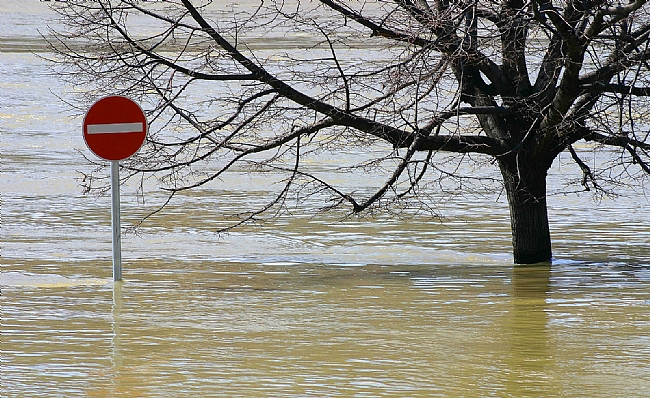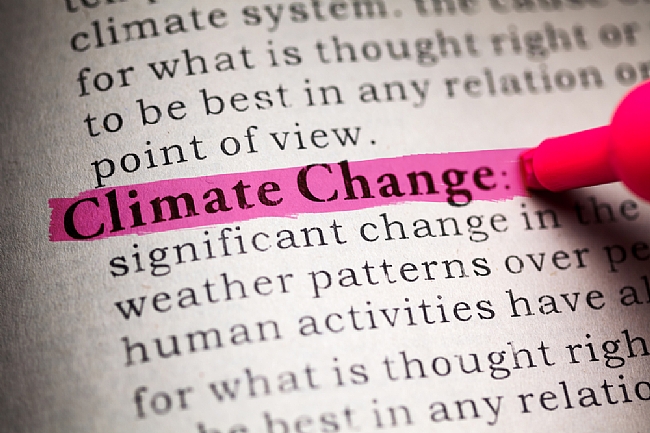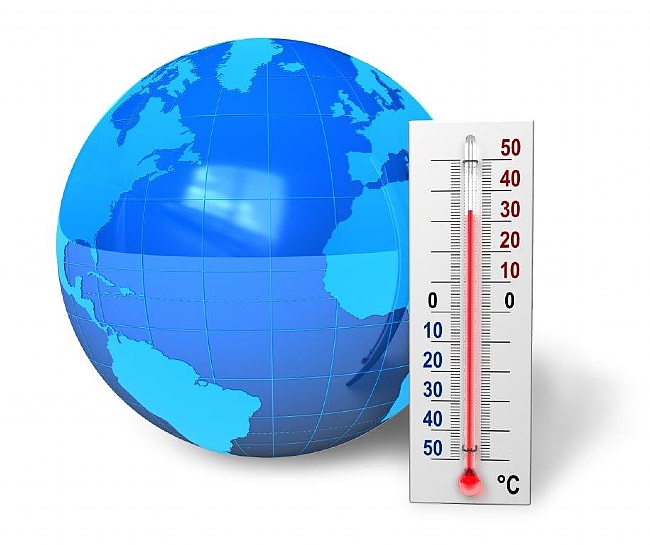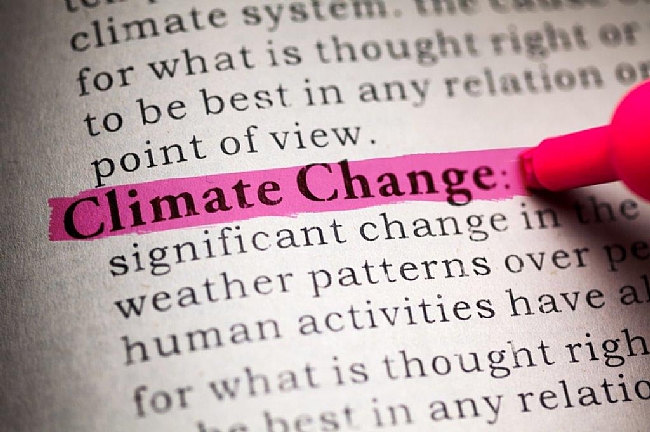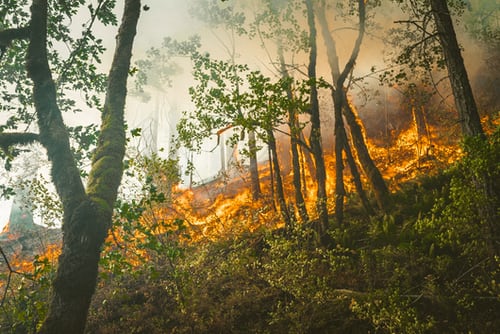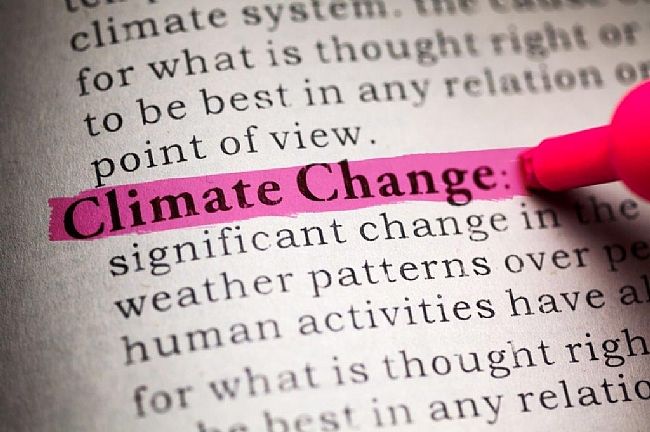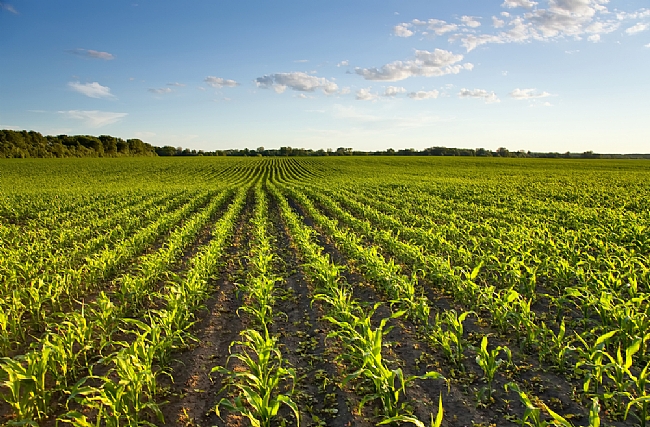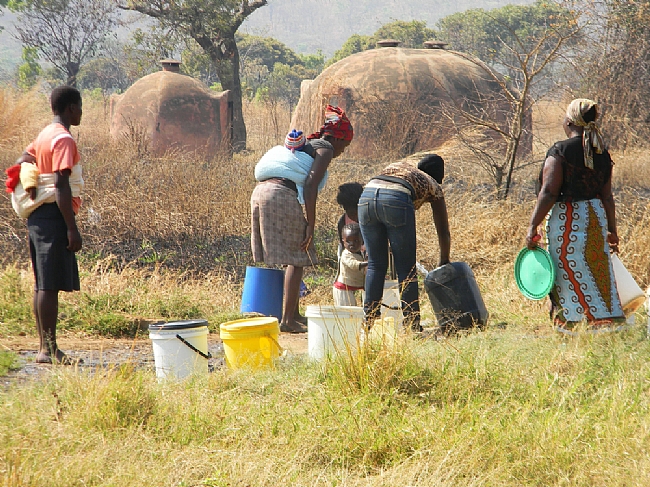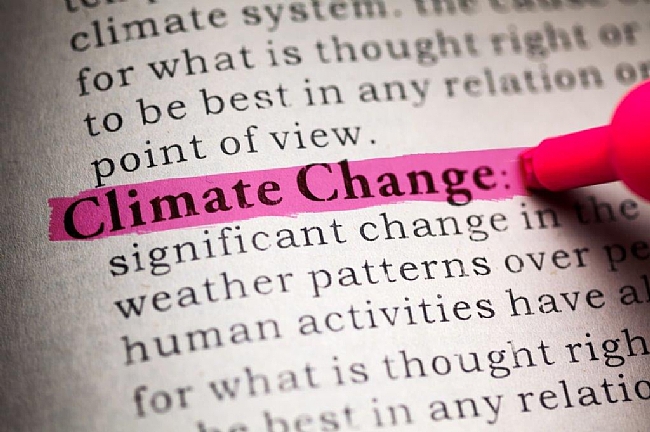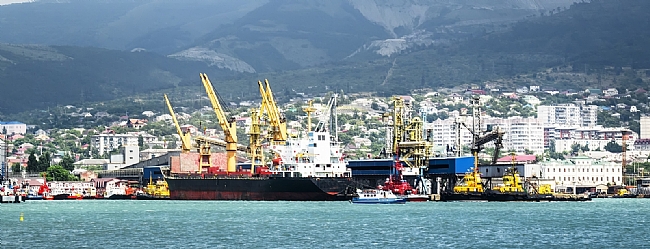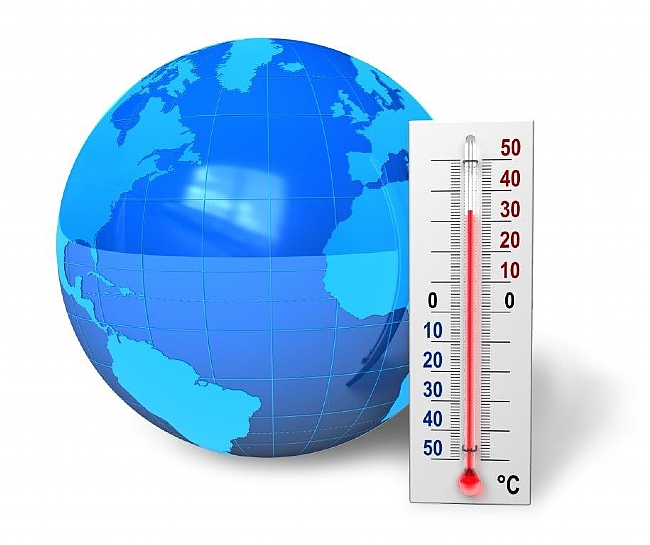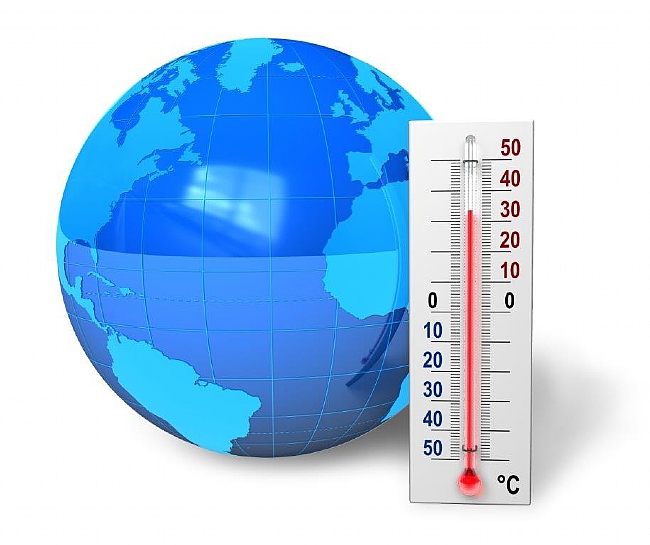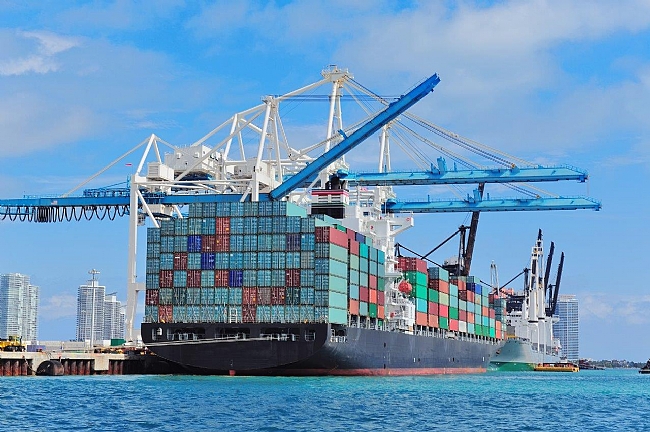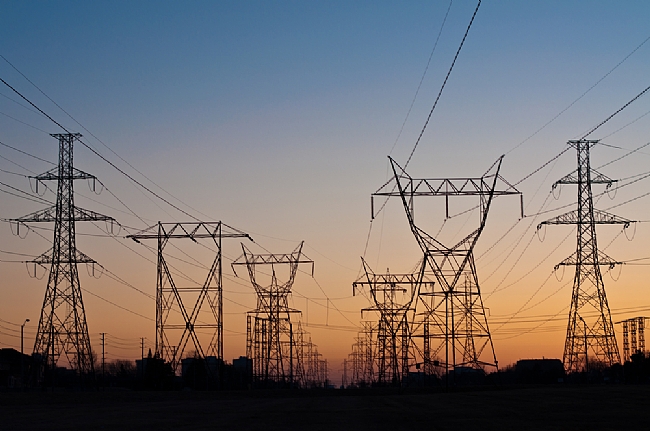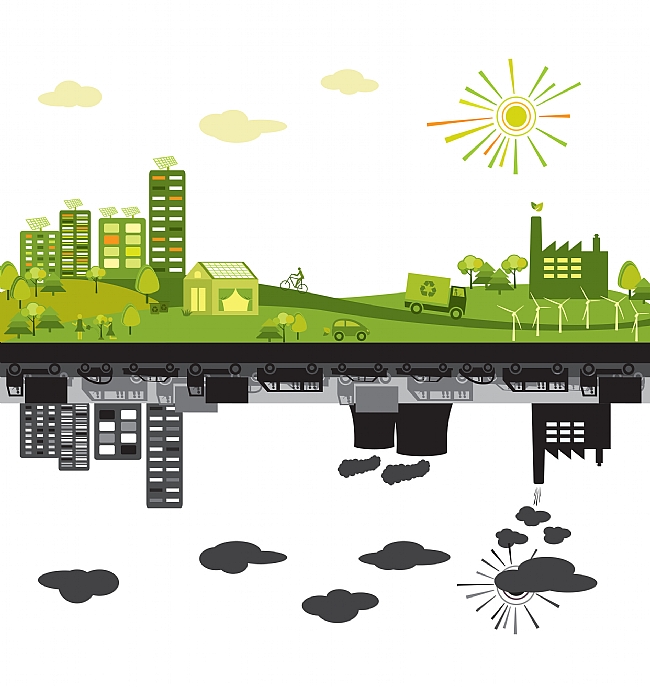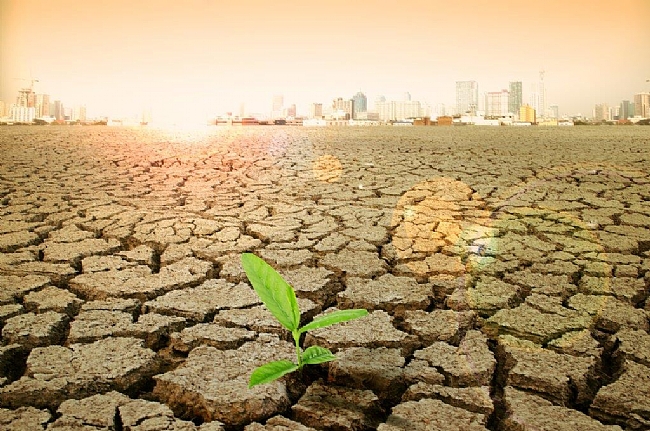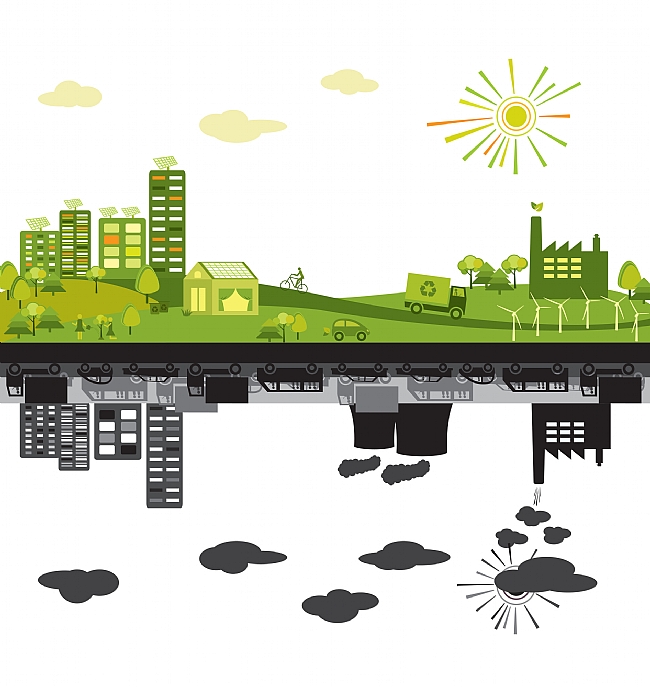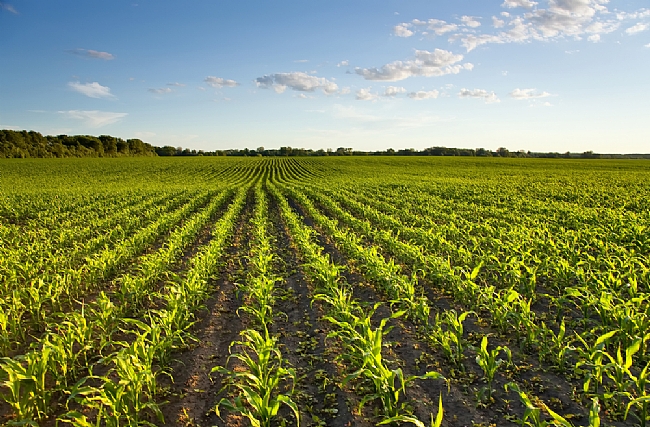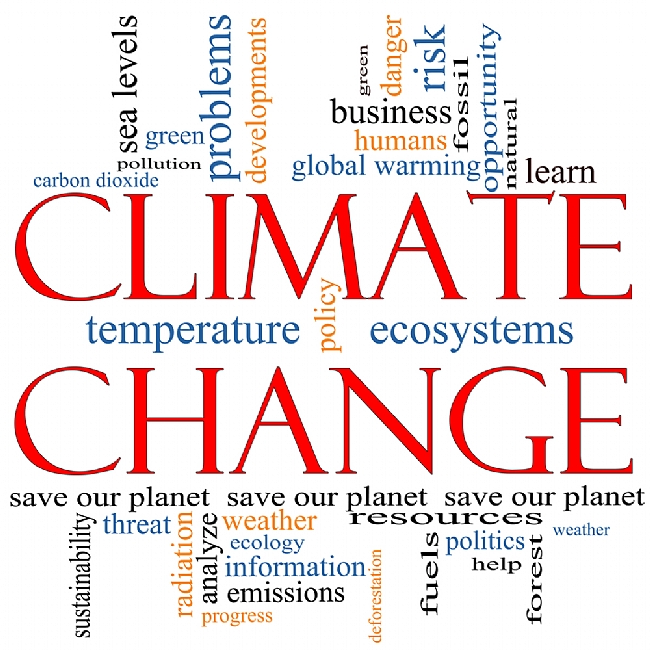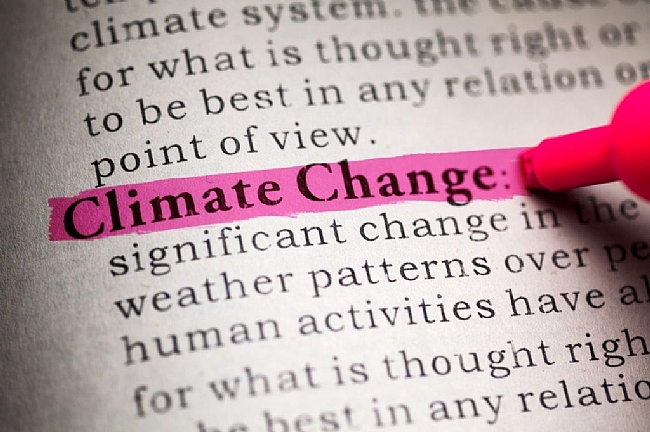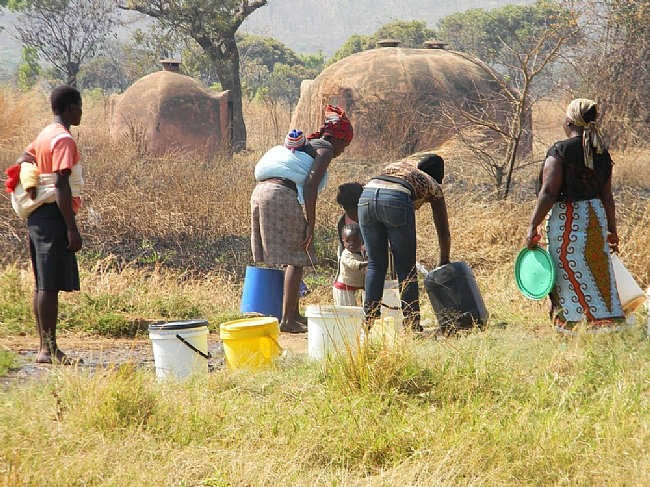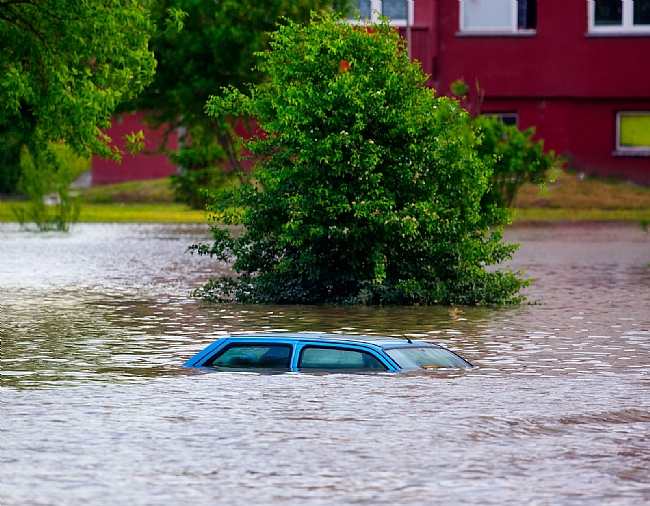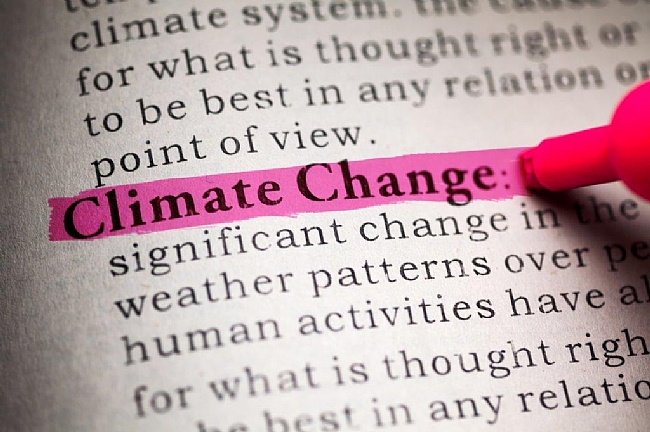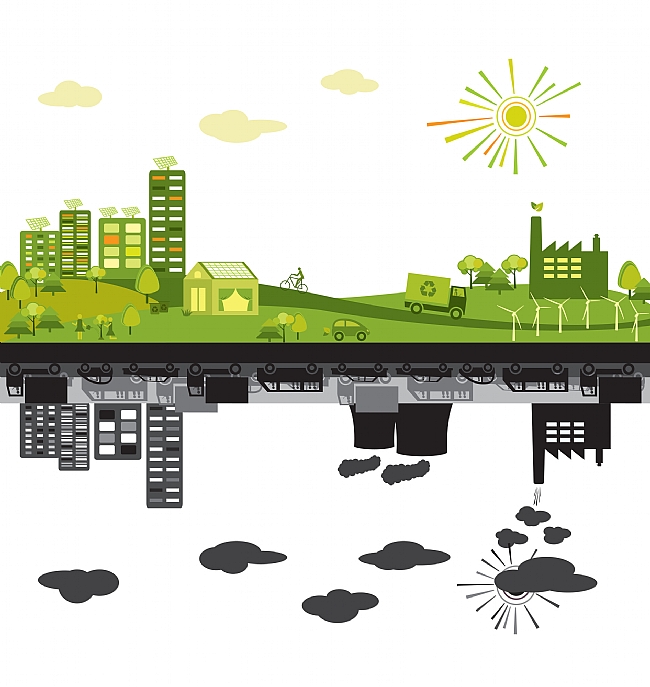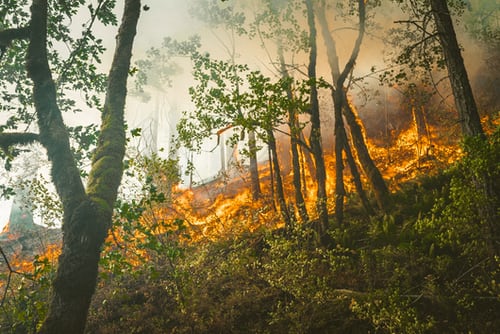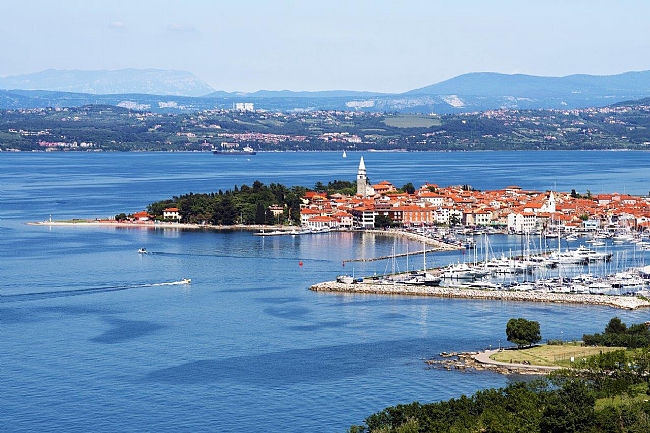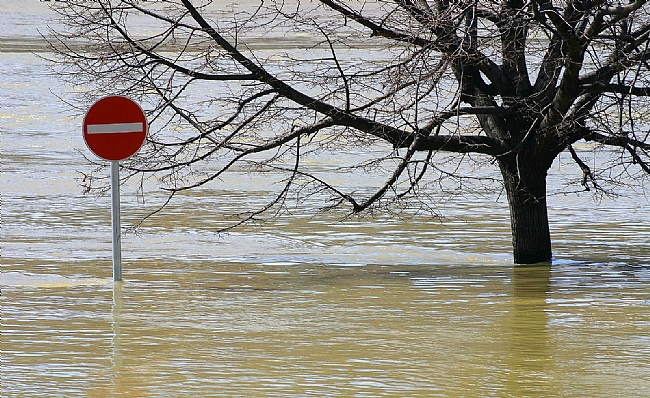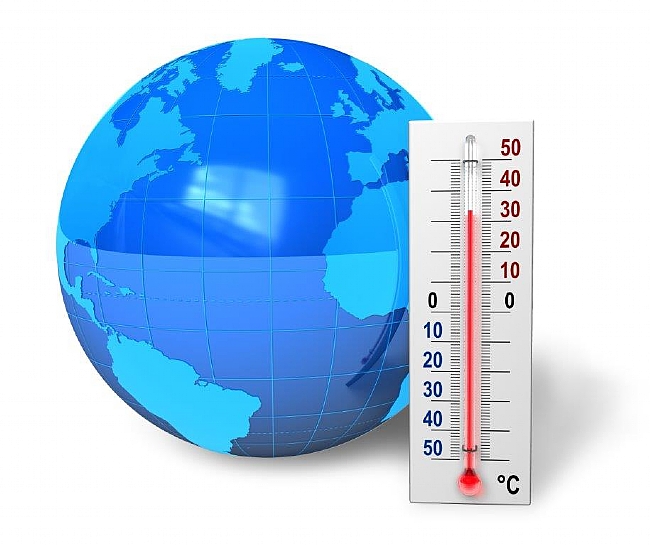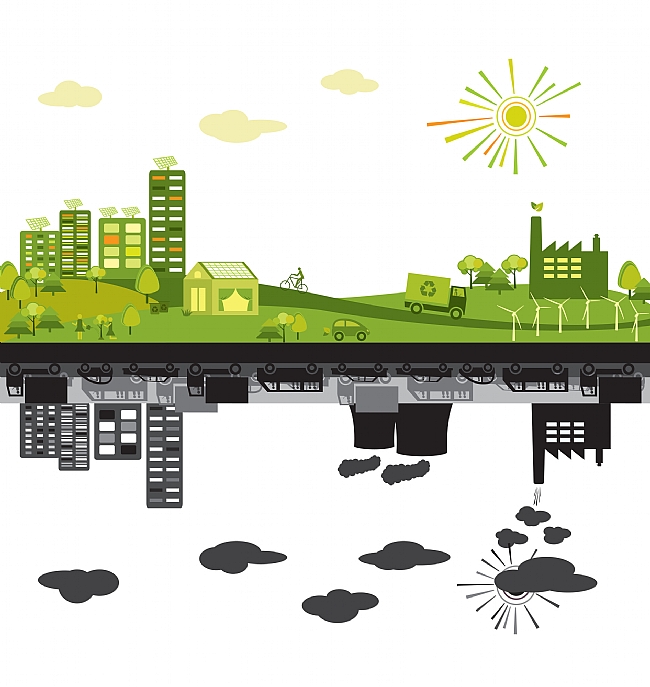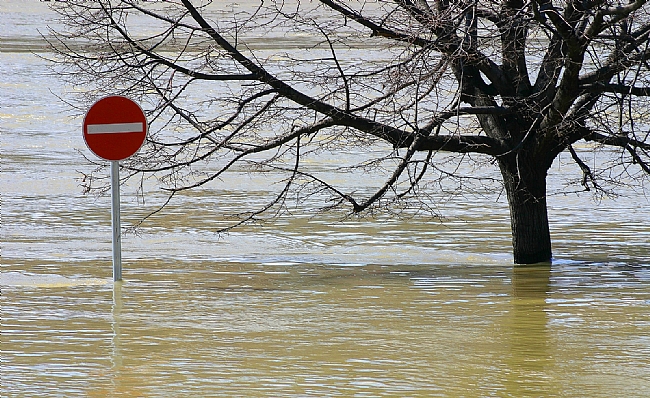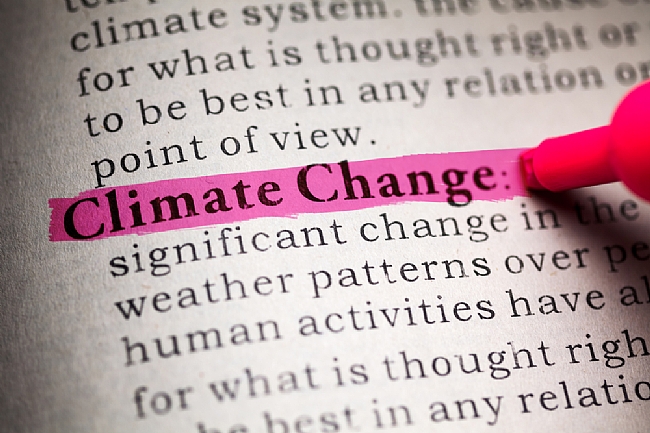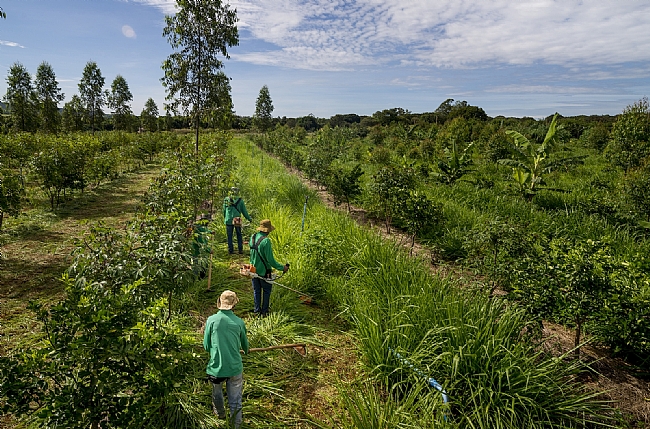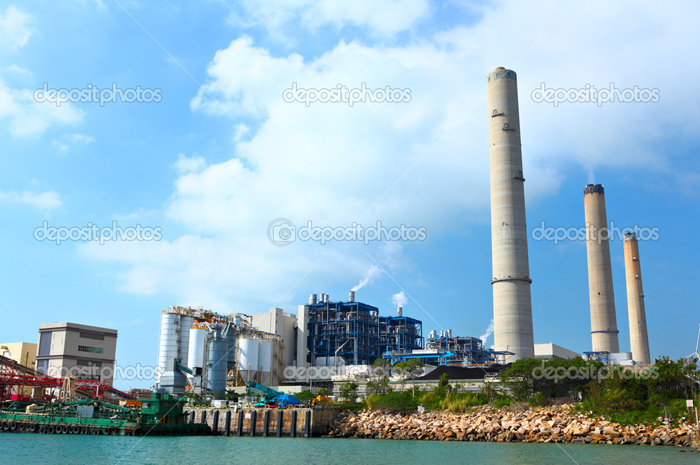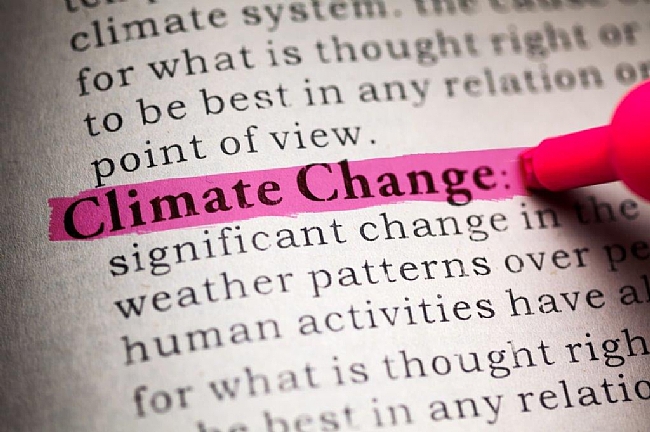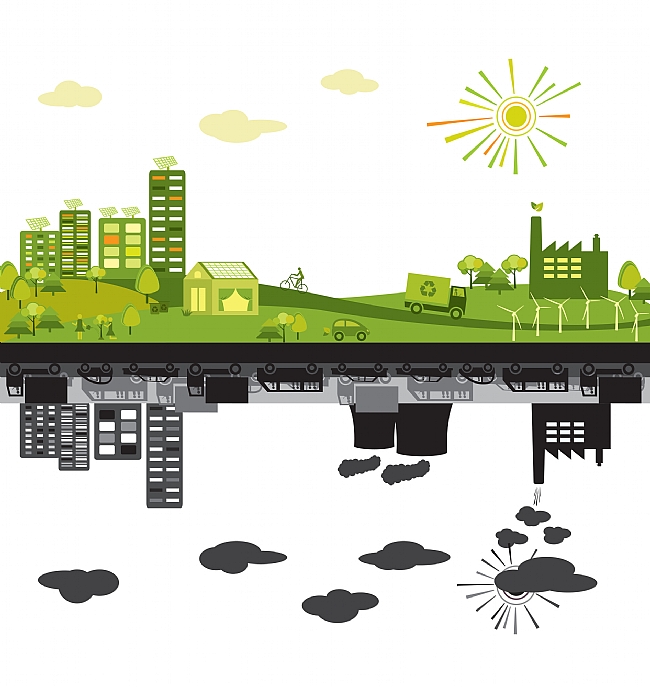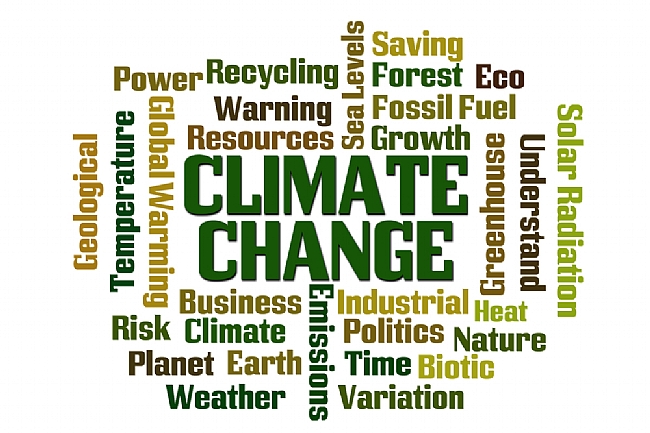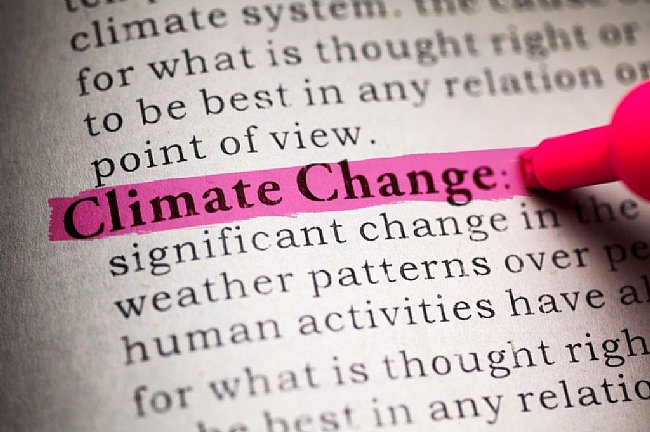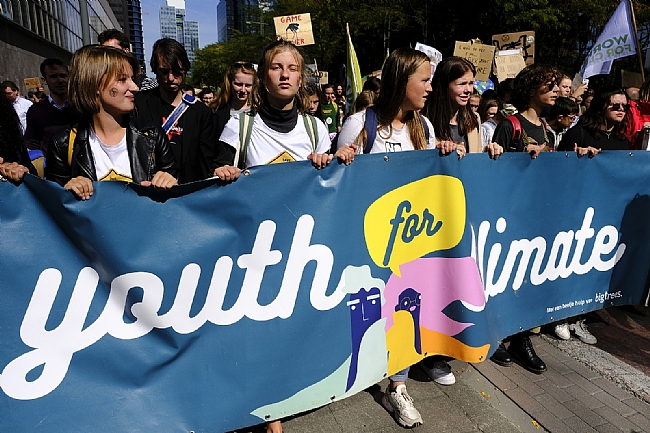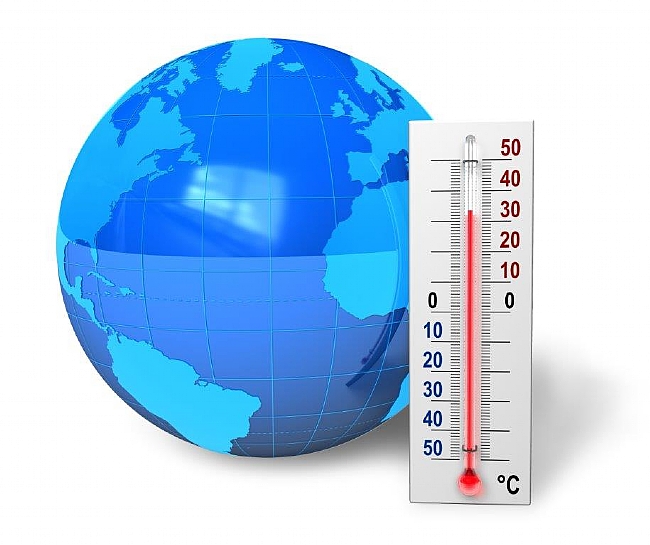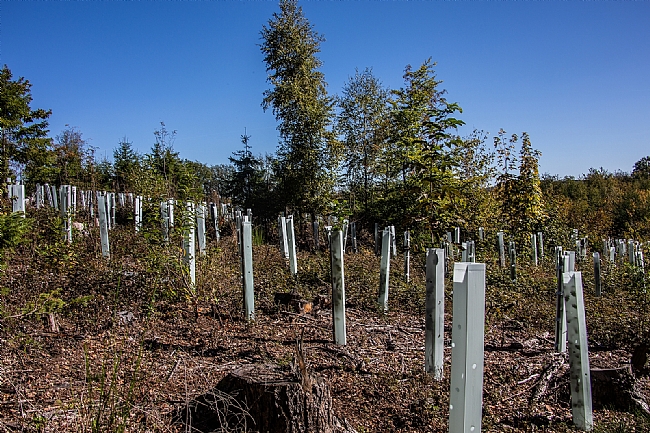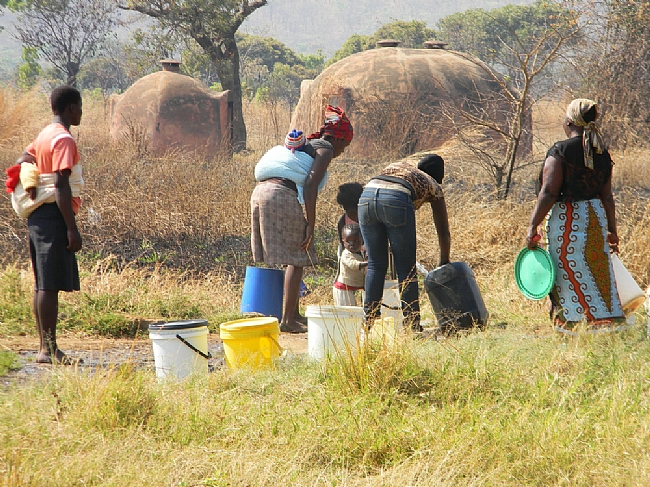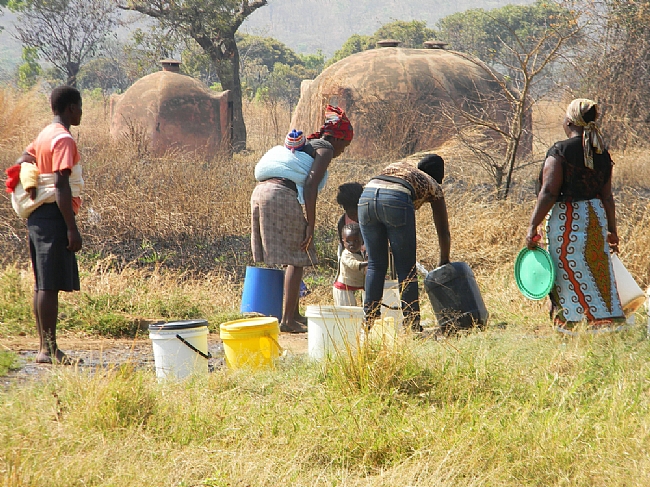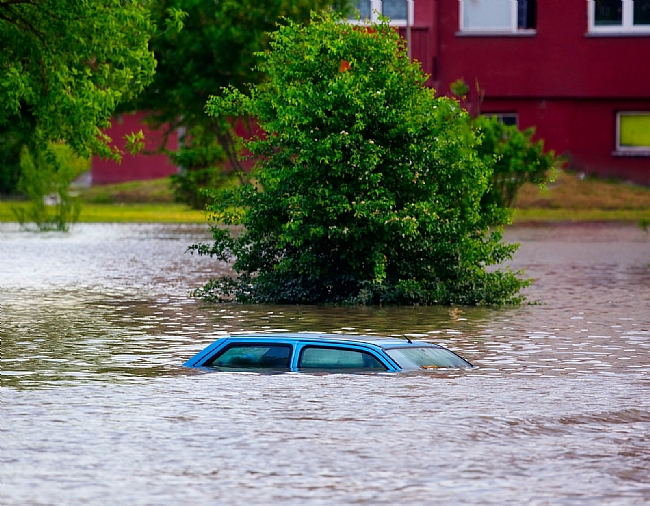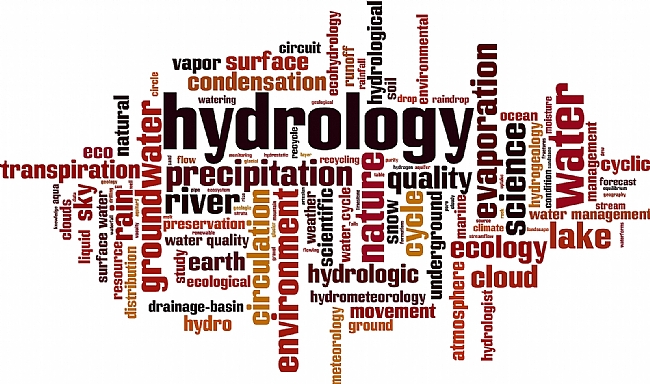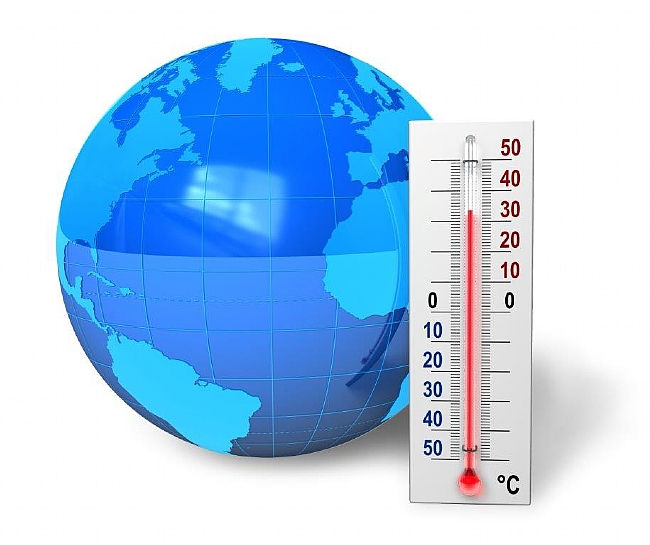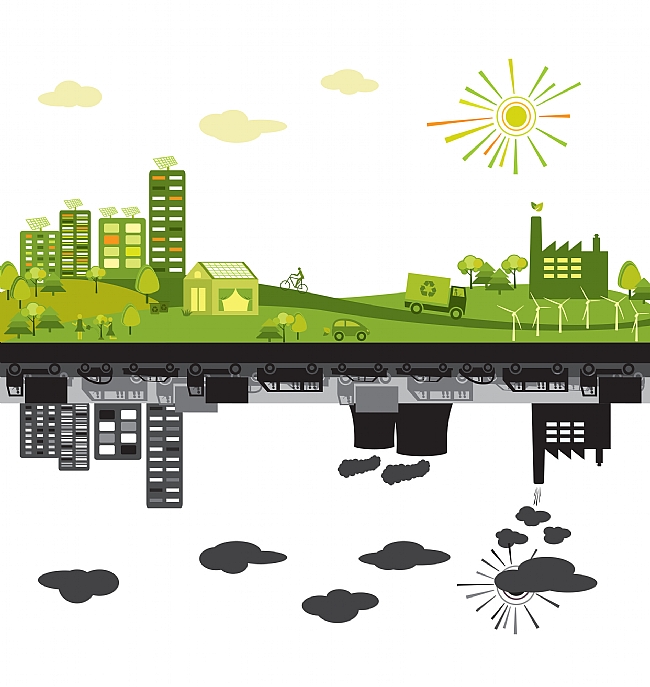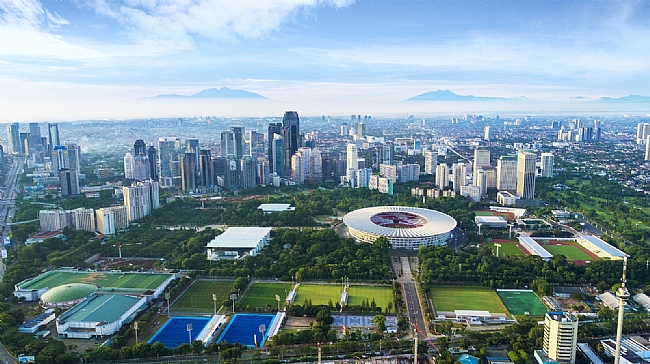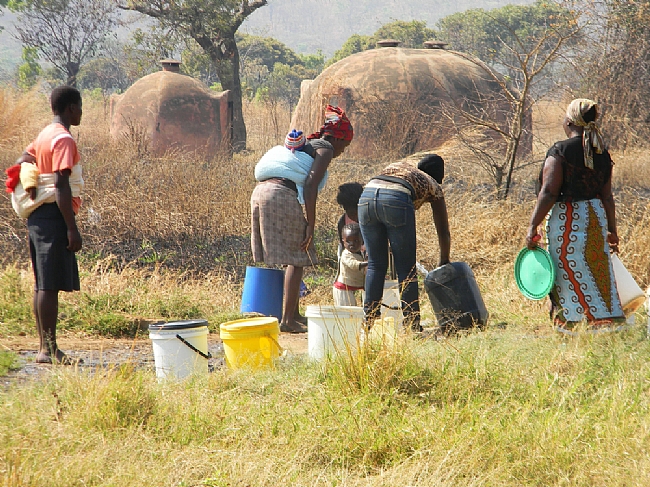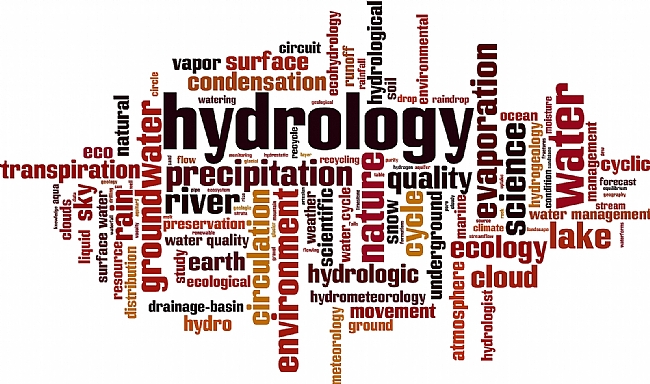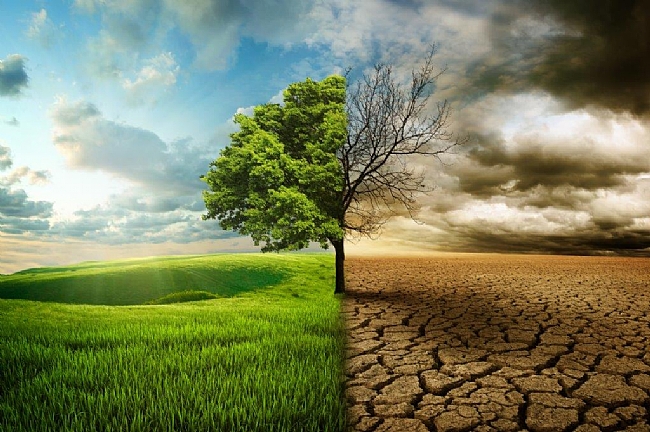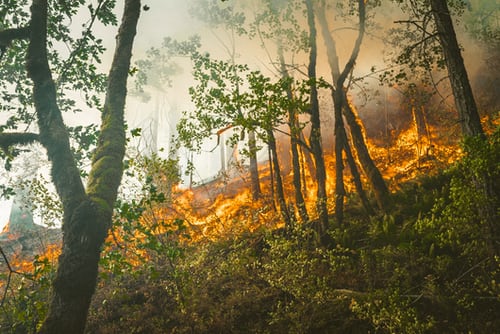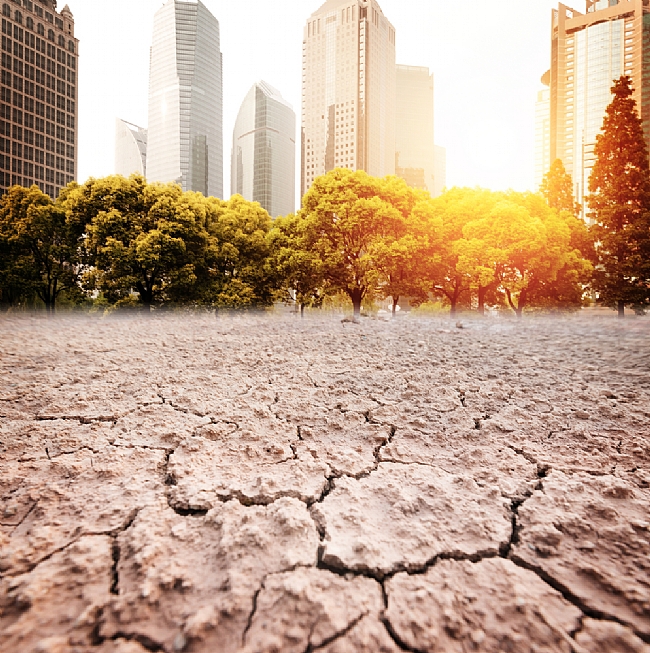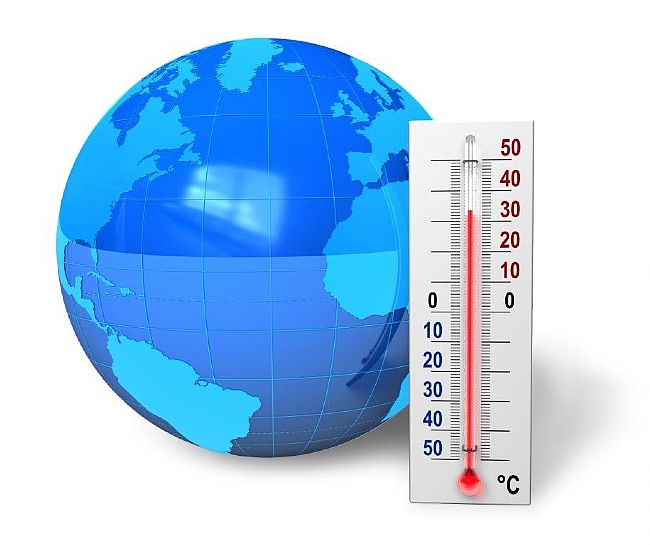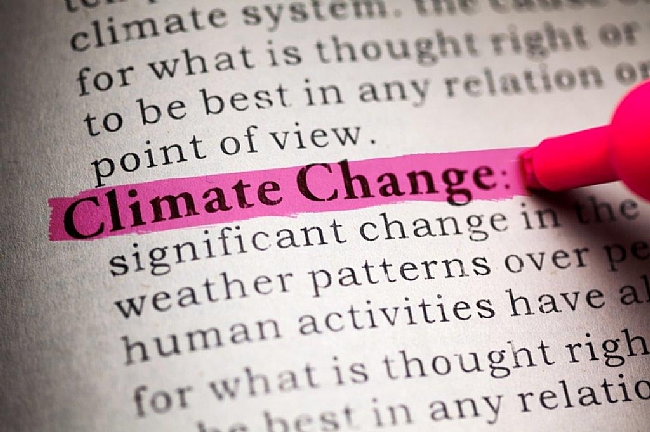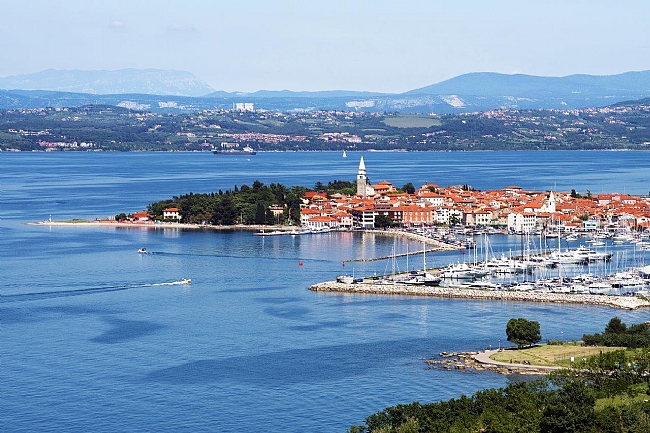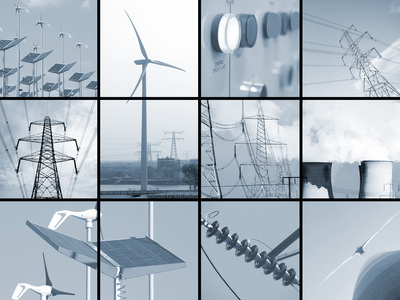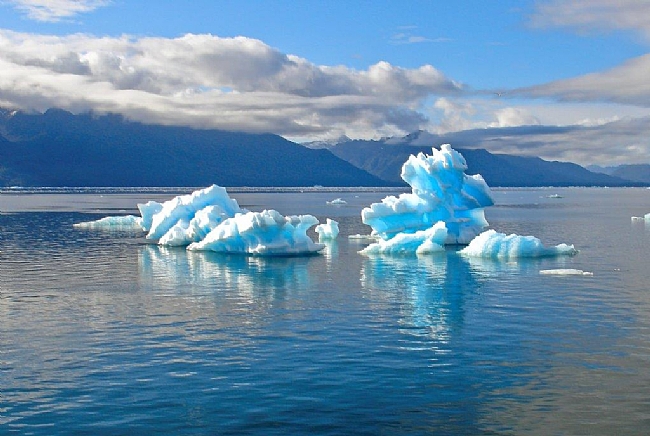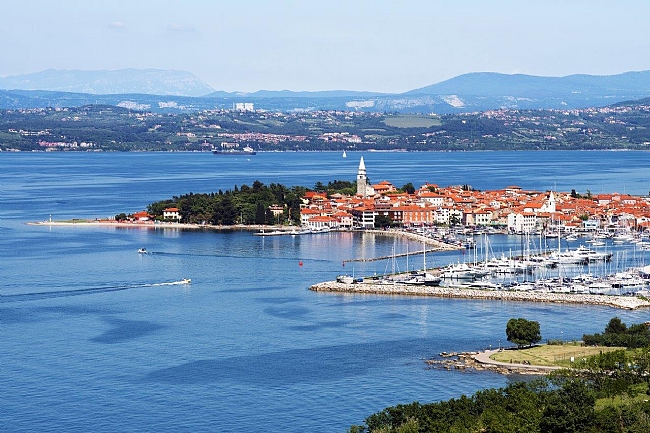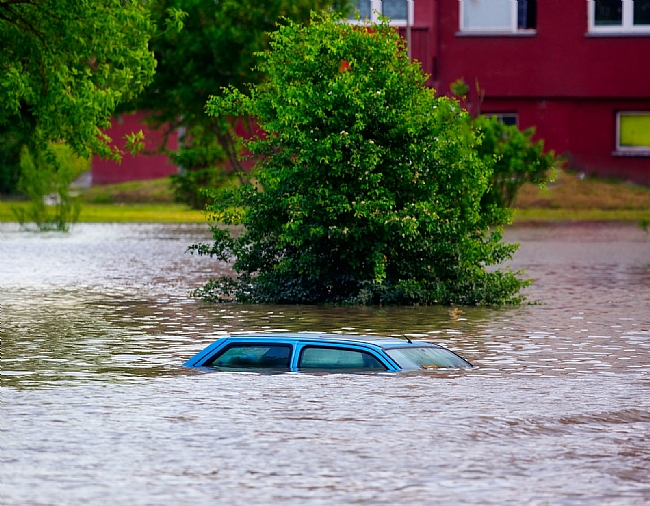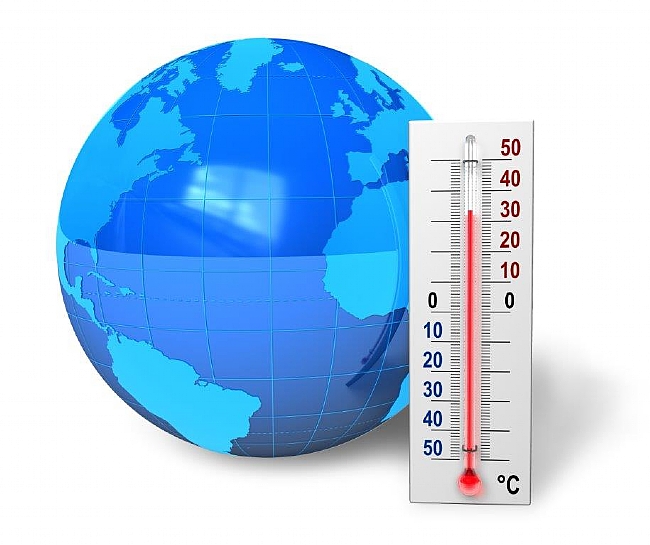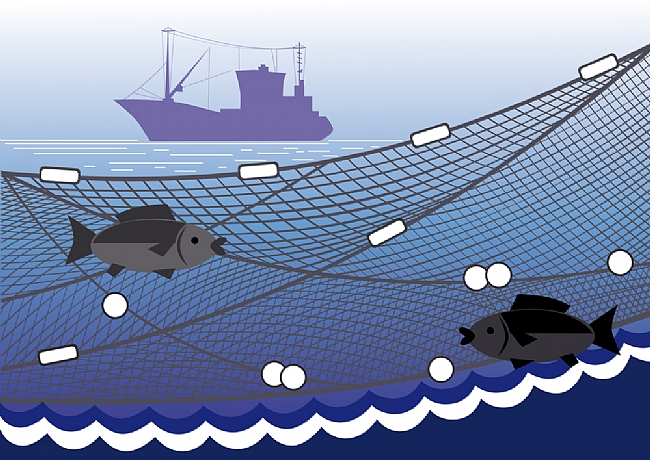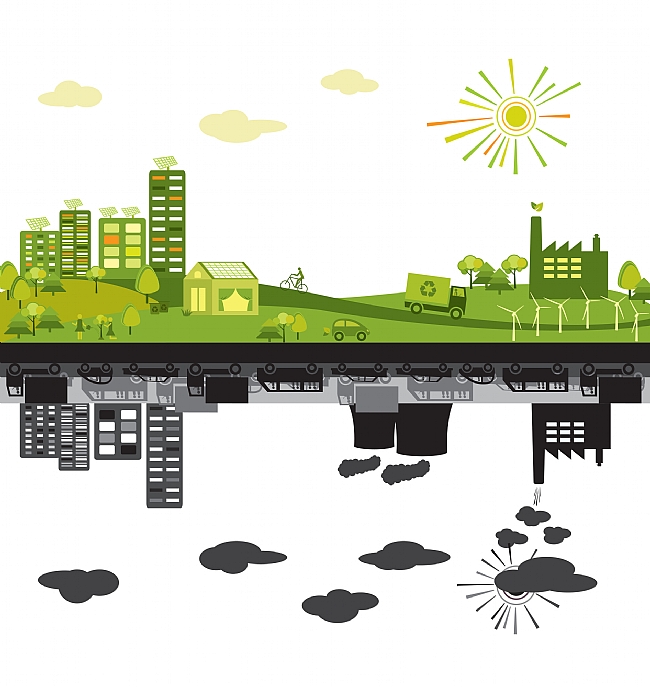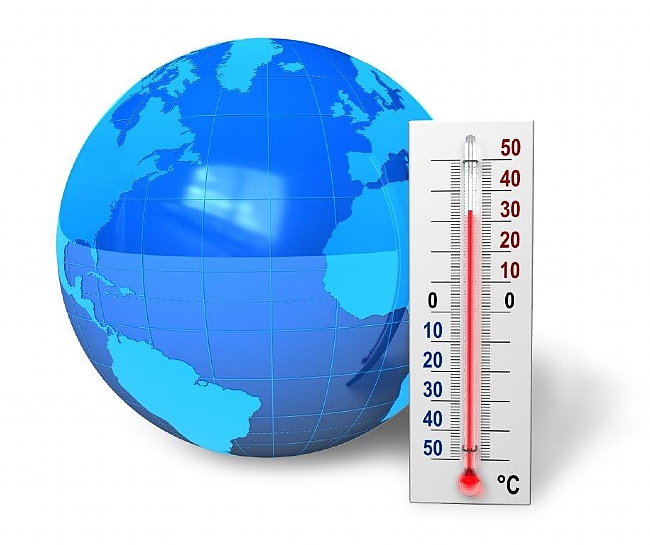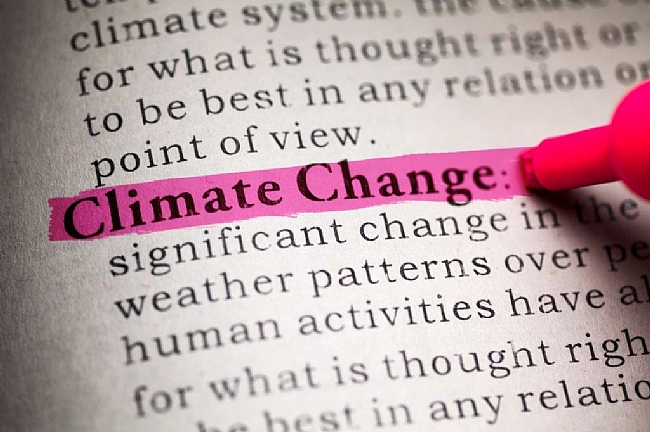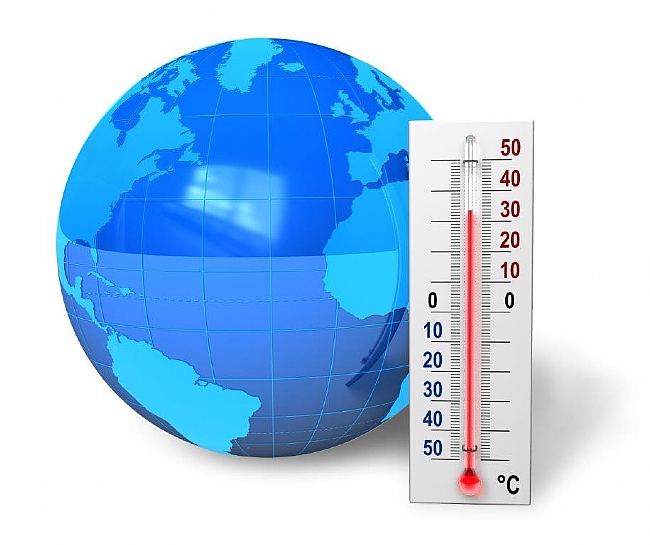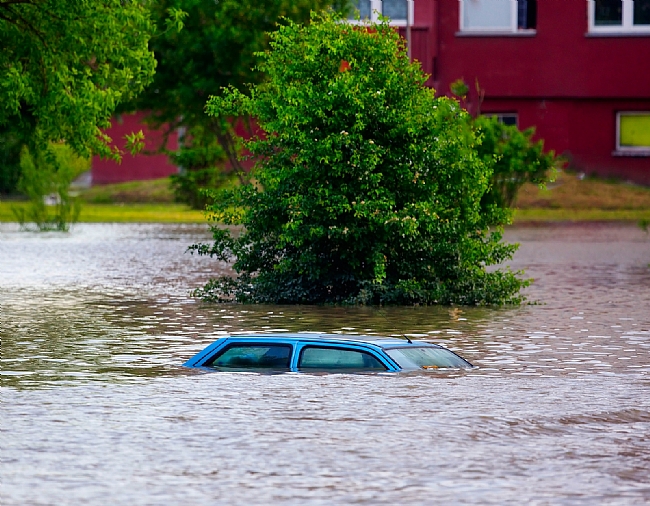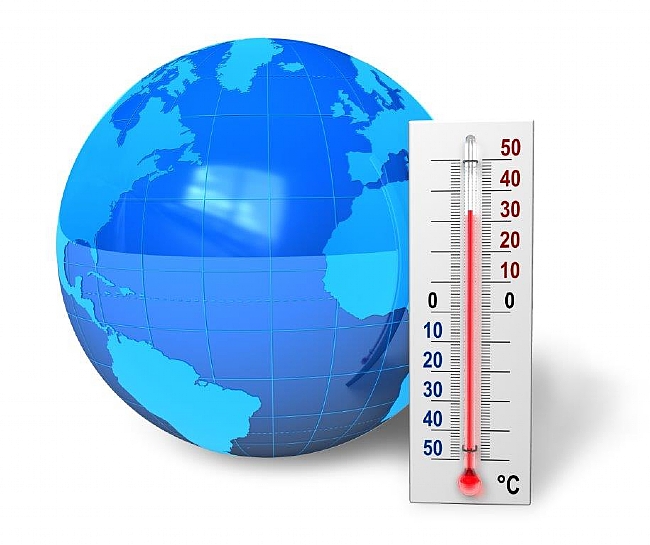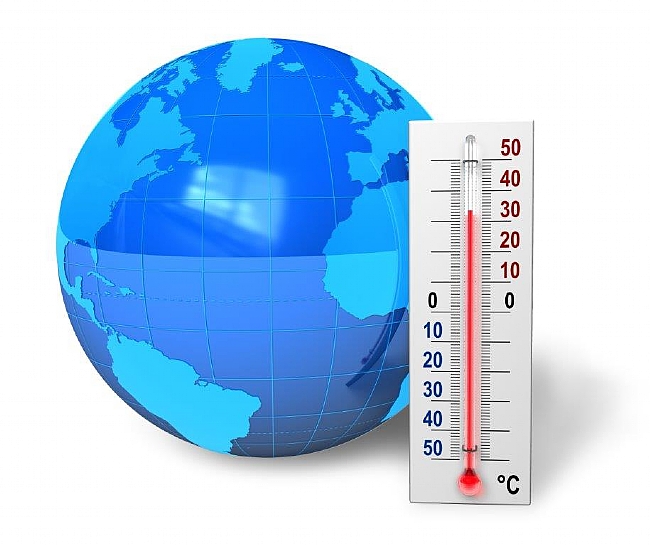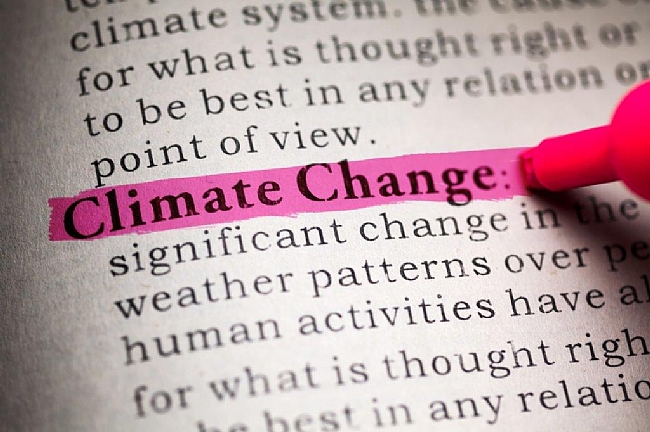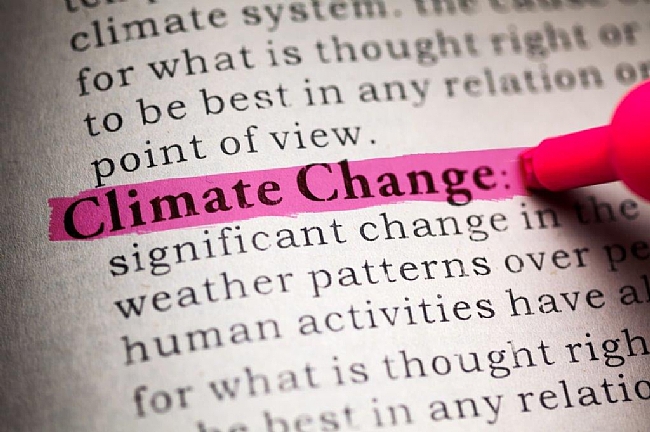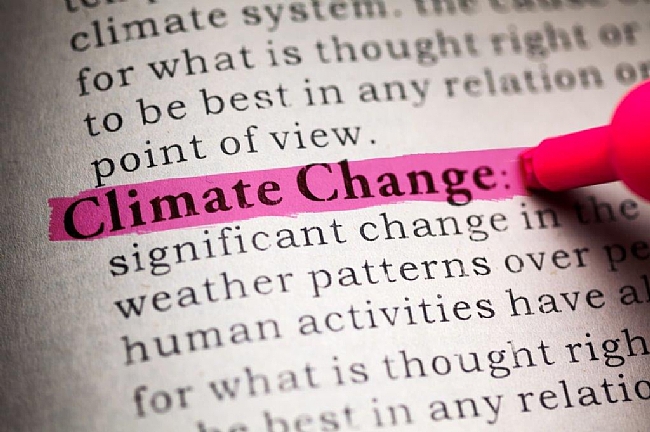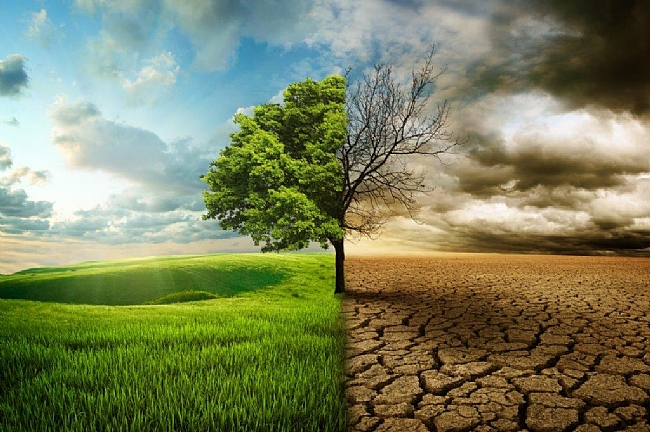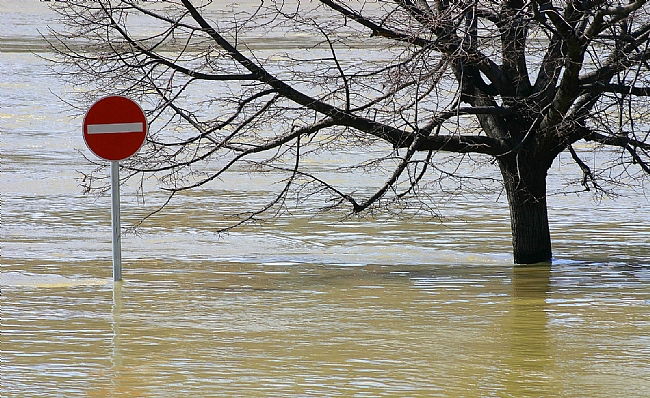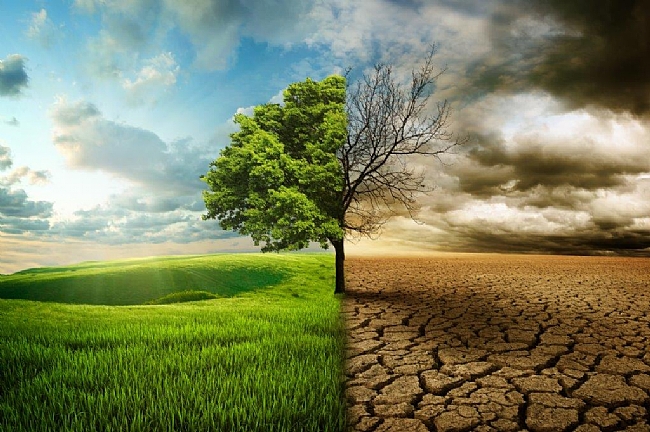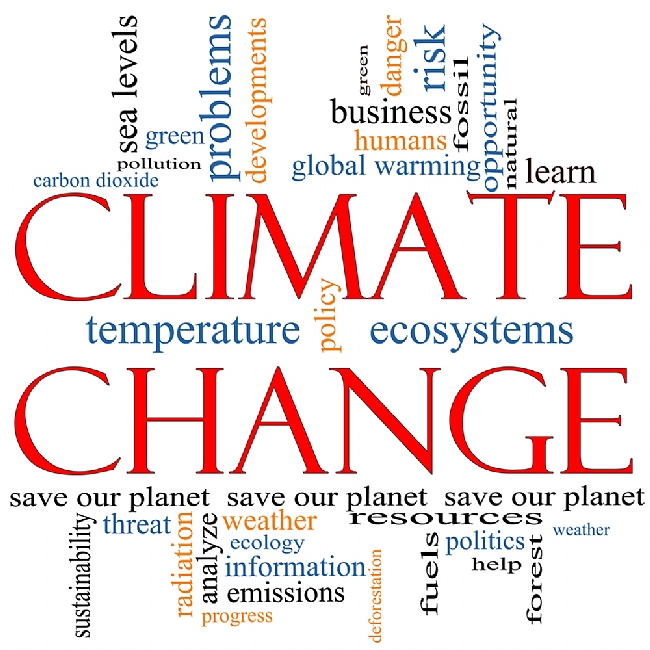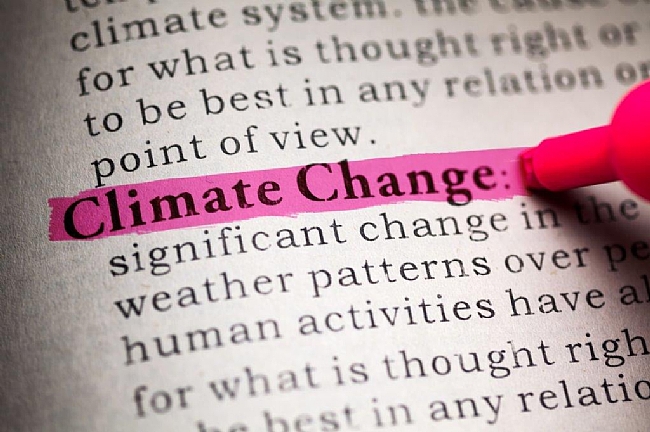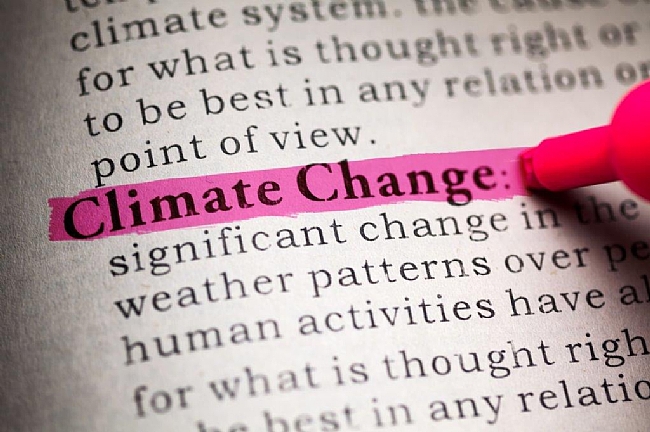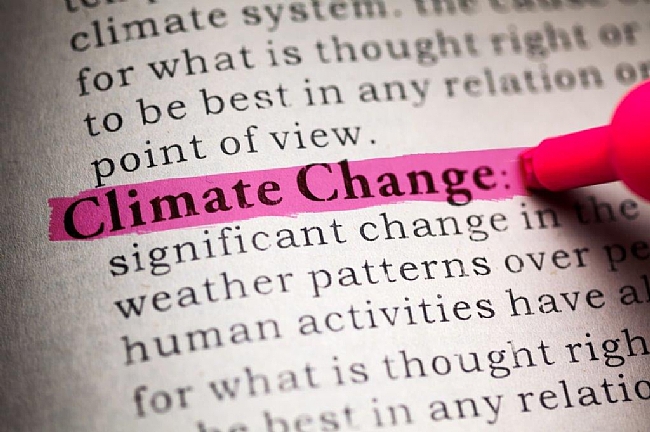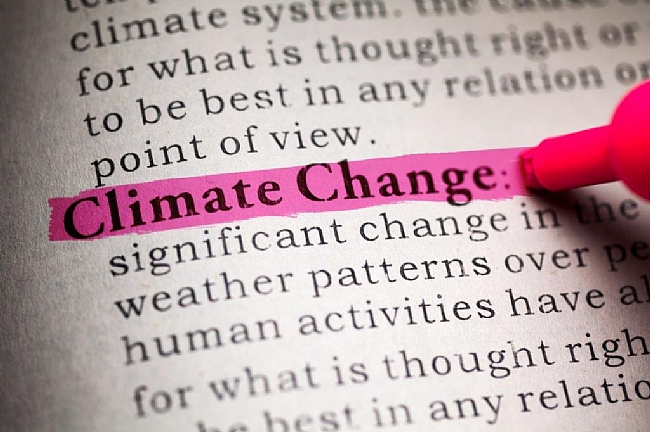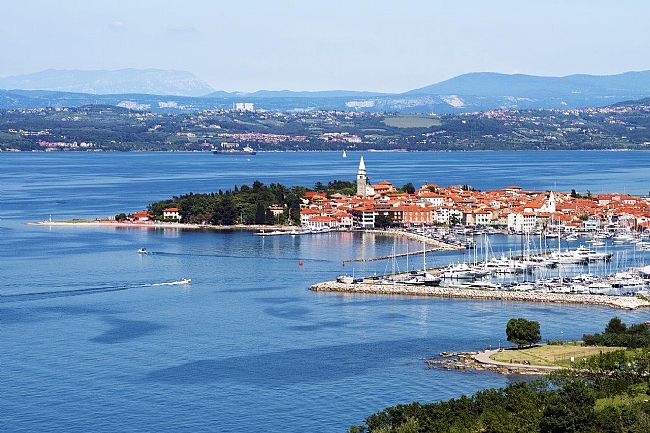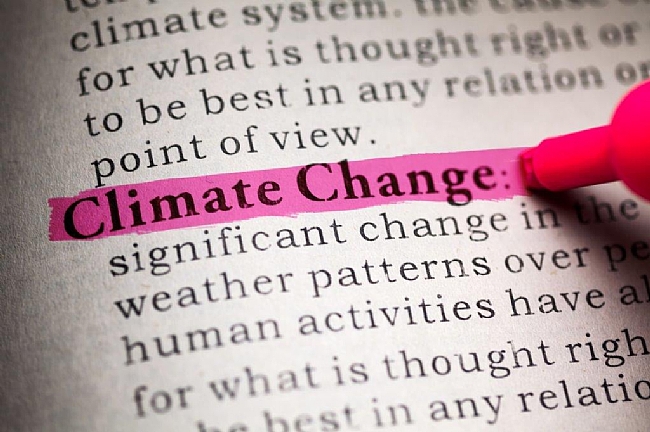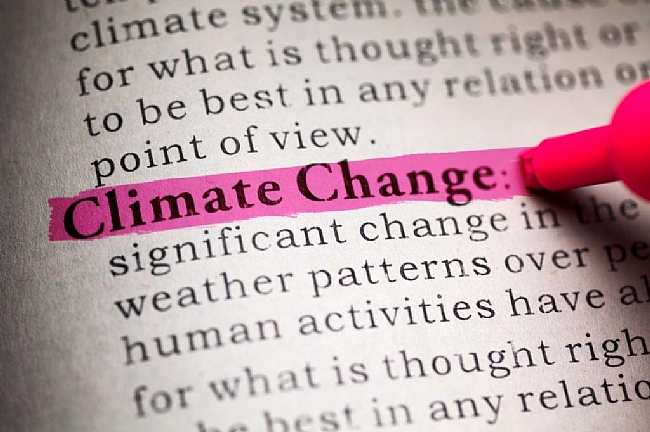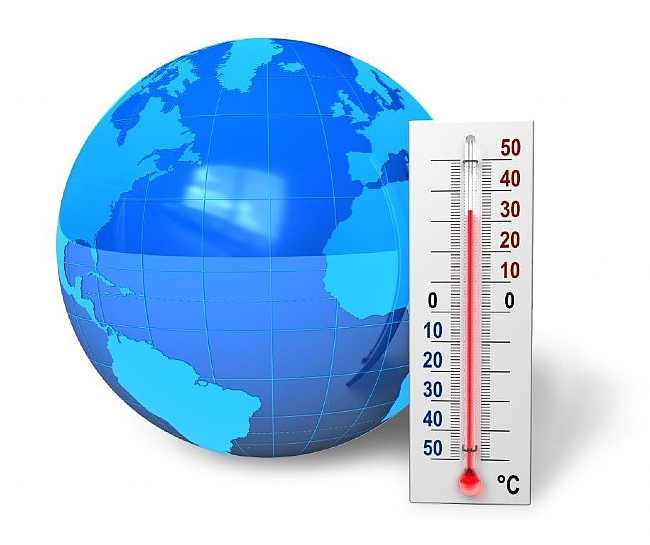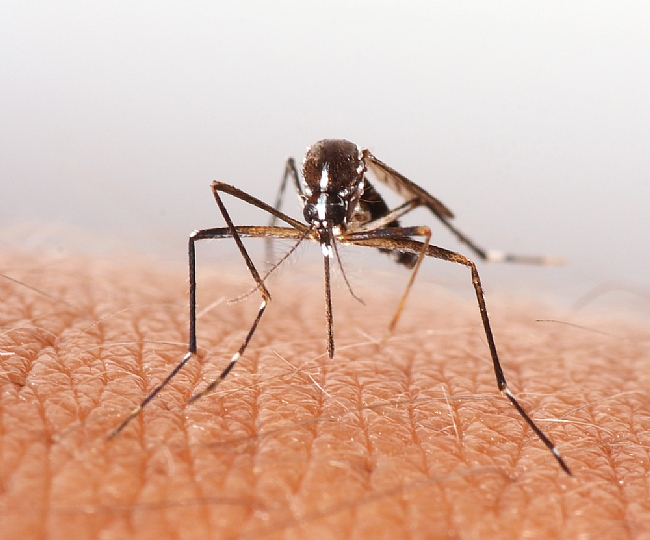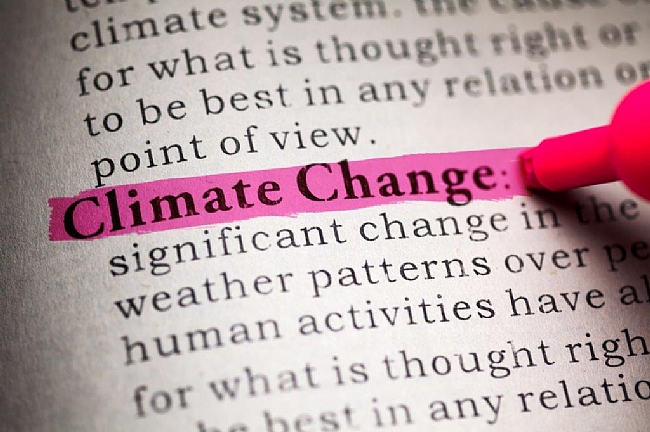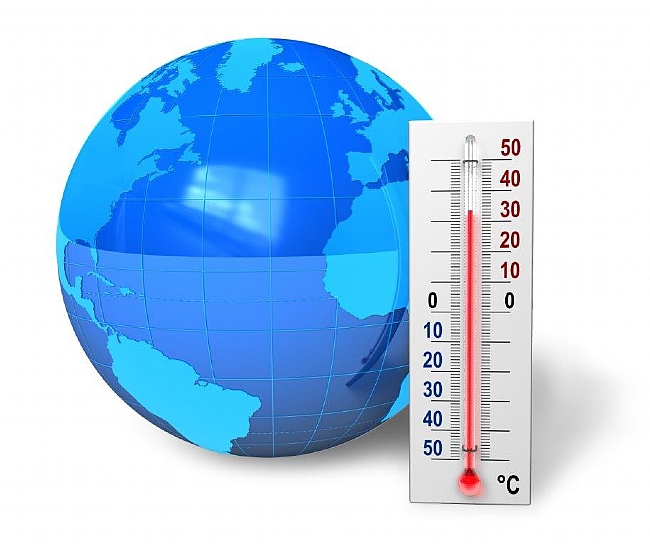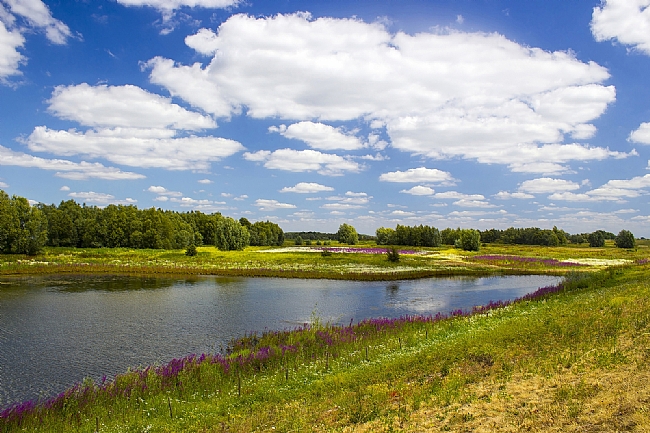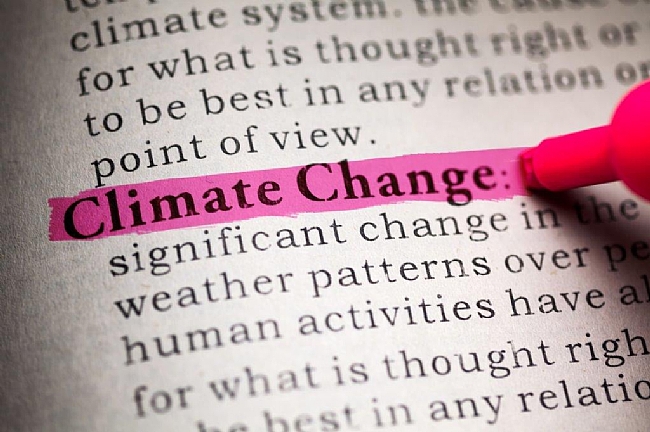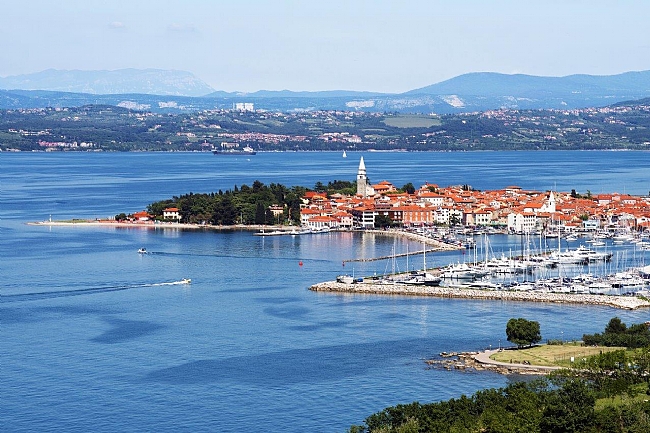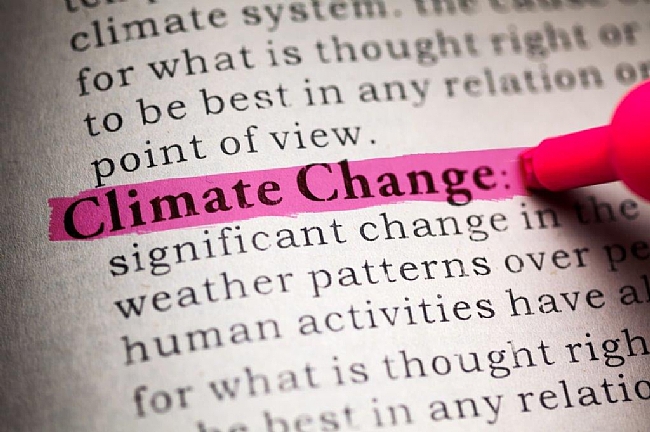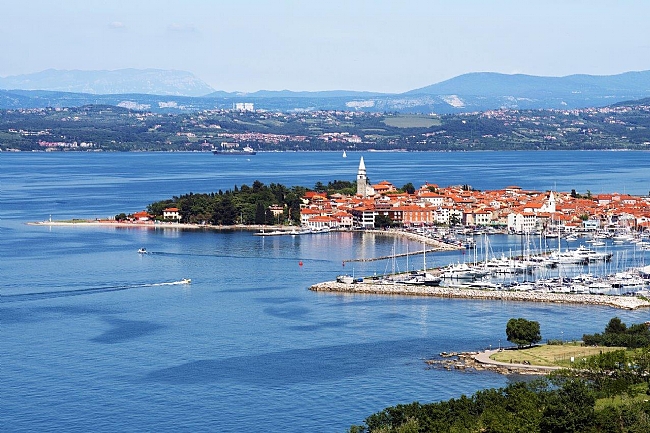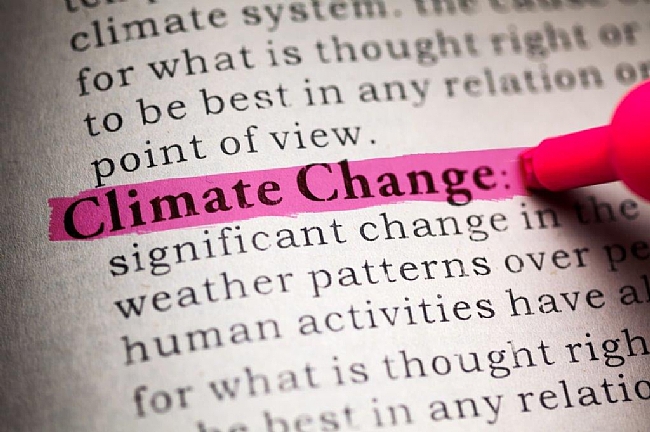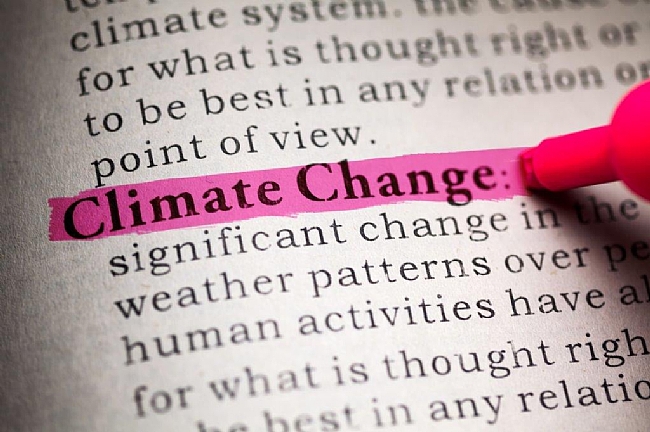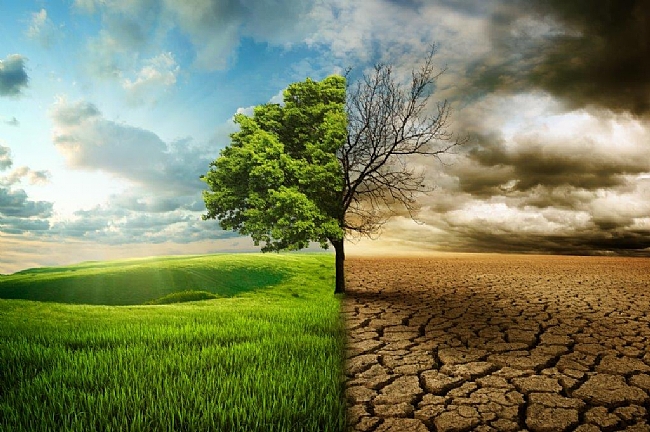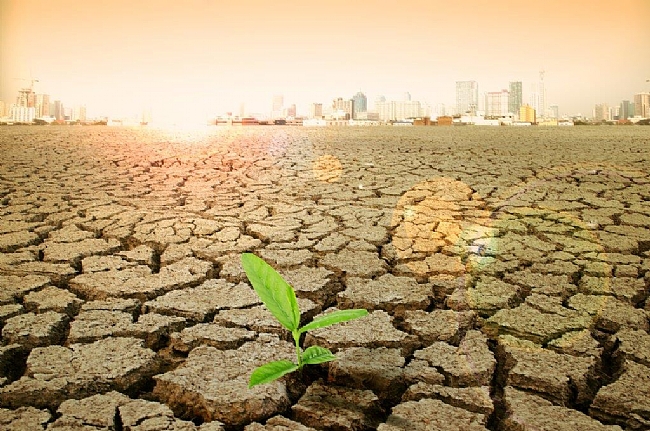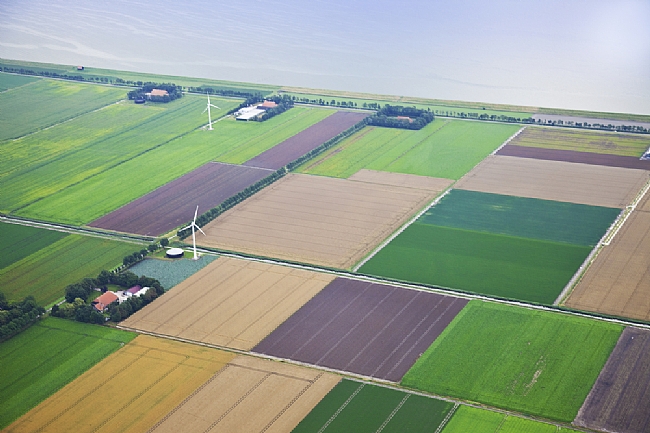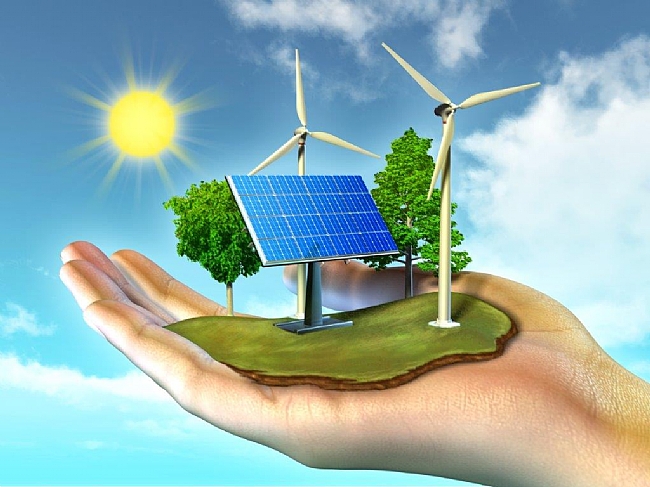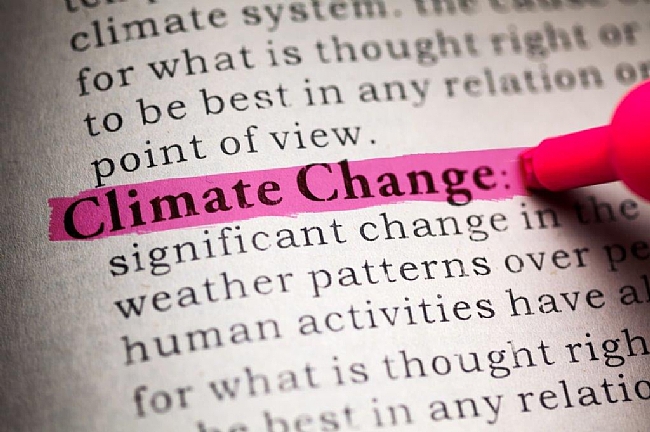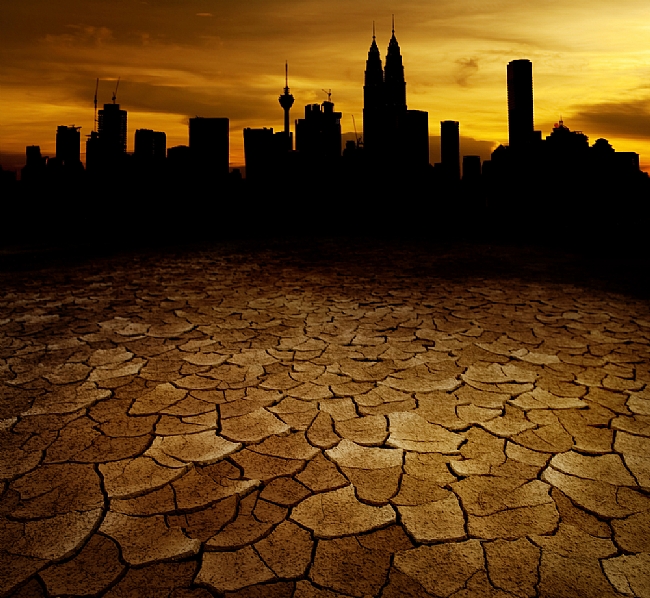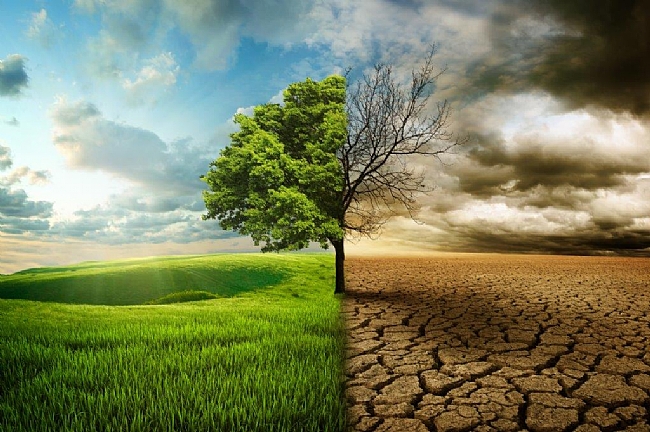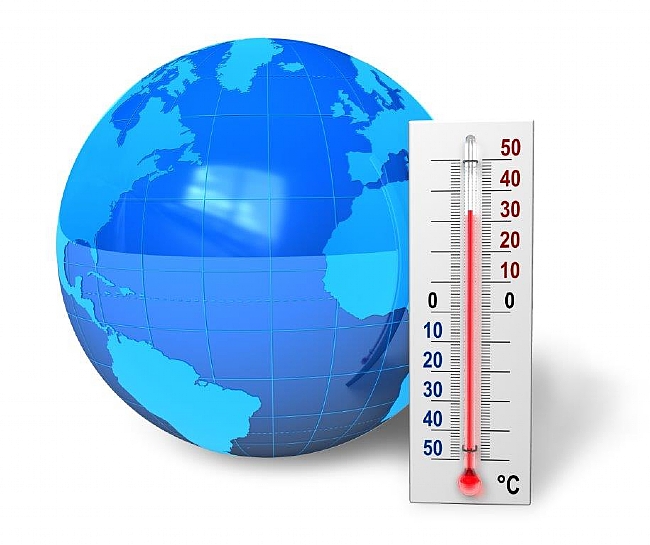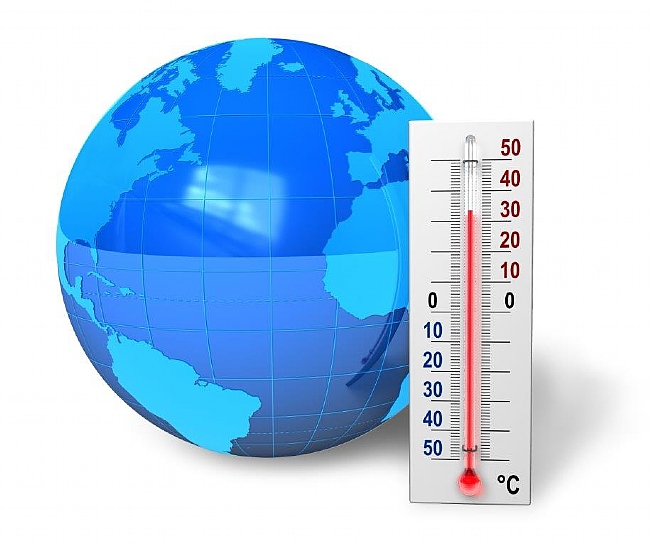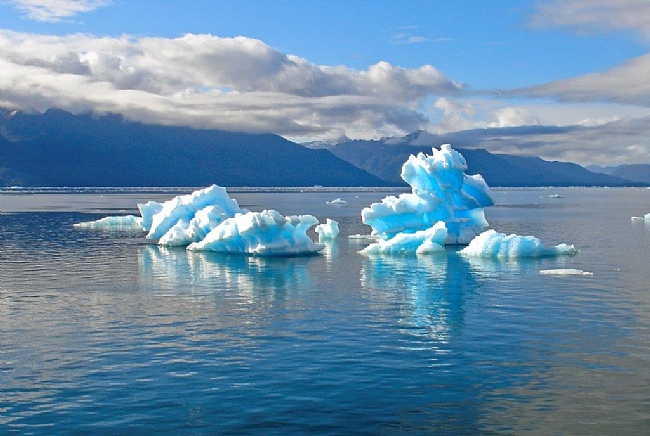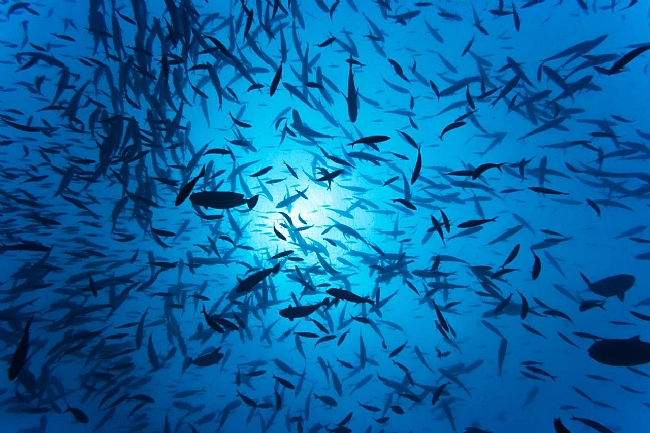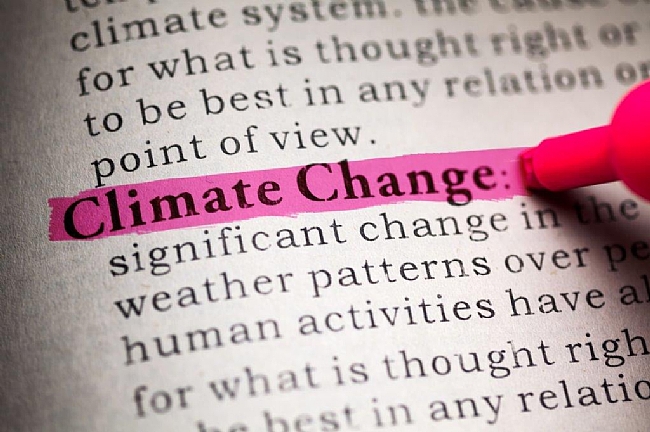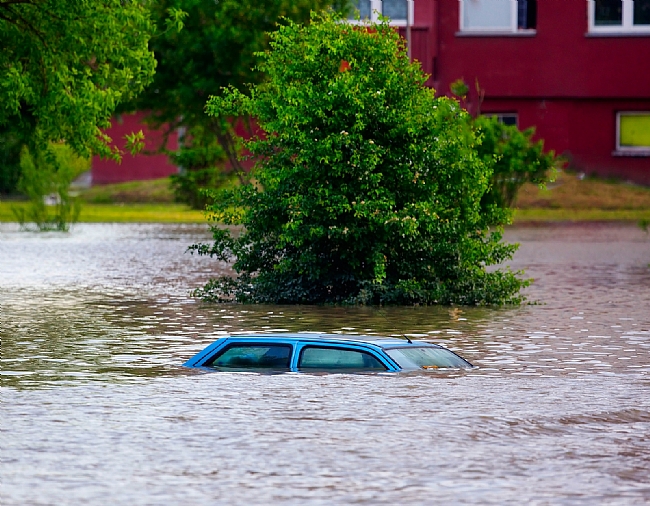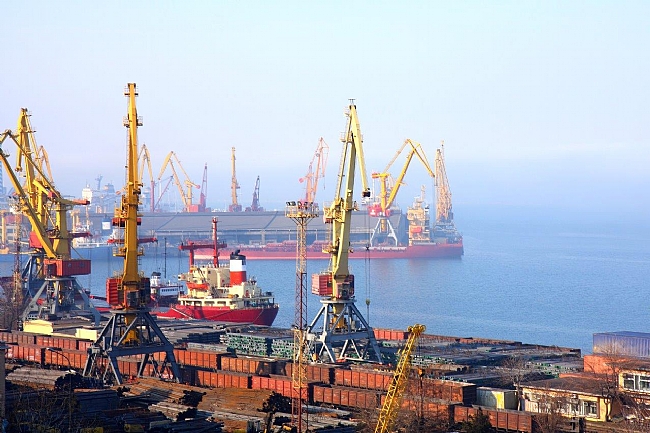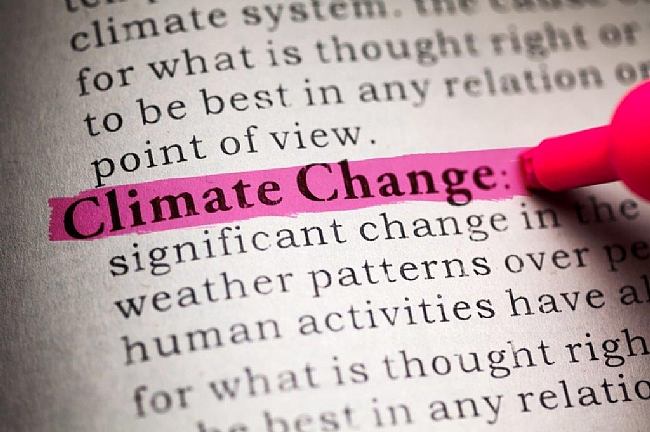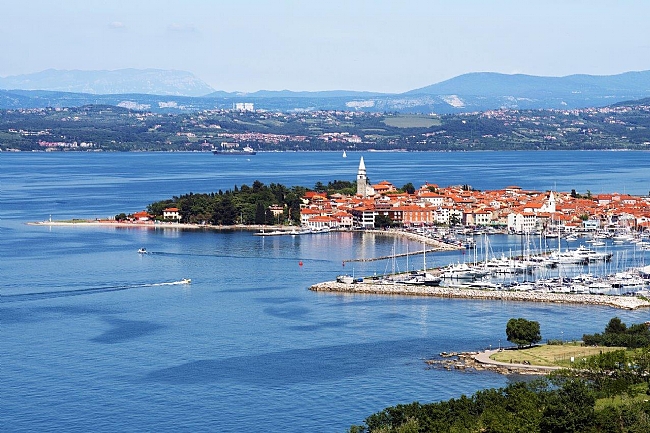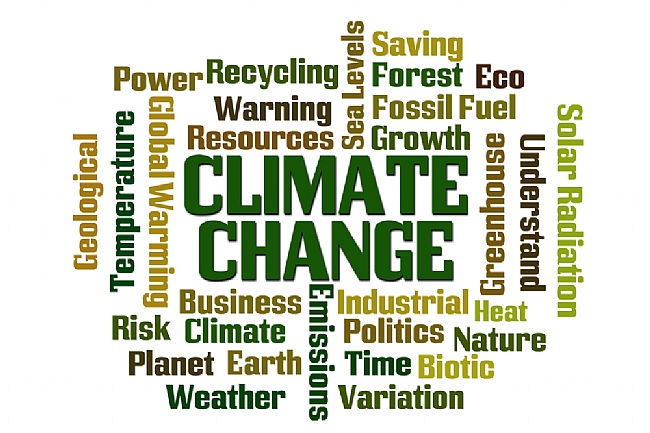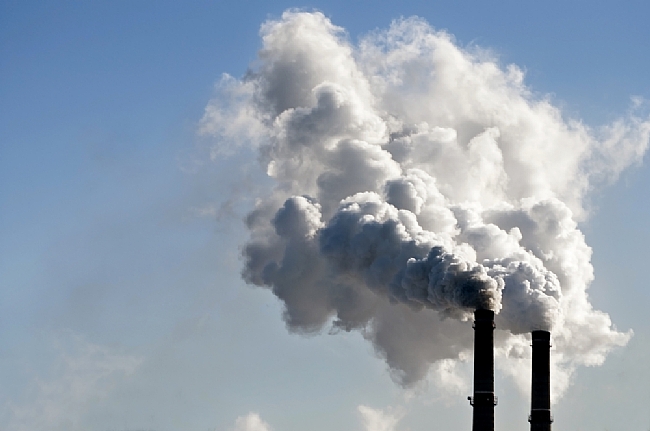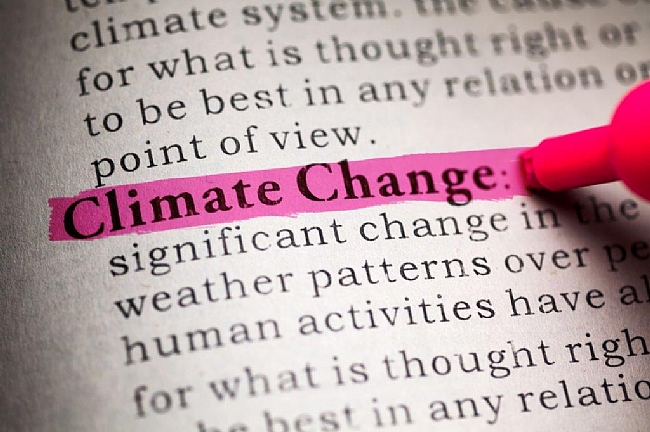2025
Enhancing social justice in actions to adapt to climate change in the city of Barcelona
Barcelona has been increasingly suffering from extreme temperatures and long heatwaves in summer. This exacerbates existing social challenges related to very high population density and very limited green areas, especially in some districts, like Sant Antoni and Eixample. In line with old and new ambitions to make the city more liveable, also in the face of climate change, the Superblock programme pursues the objectives of expanding the green infrastructure and restricting private motorised traf
More
2025
Special Report – Managed Retreat: Preparing Coastal Cities for Sea Level Rise
The special report Managed Retreat: Preparing Coastal Cities for Sea Level Rise, published by the Ocean & Climate Platform as part of the Sea’ties initiative, offers a comprehensive exploration of managed retreat as a proactive adaptation strategy for coastal urban areas confronting the escalating threats of sea-level rise.
More
2025
State of the Global Climate 2024
This is the warmest year in the 175-year observational record. The State of the Global Climate 2024 report underlined the massive economic and social upheavals from extreme weather and the long-term impacts of record ocean heat and sea-level rise.
More
2025
Prescribed fires as a climate change adaptation tool
Climate change has been shown to increase wildfire risk, while prescribed burning is a potential management action that landowners can perform to adapt to such climate-driven changes in risk. This study builds off natural resource economic theory to illustrate how wildfire is jointly determined with privately optimal prescribed burn decisions by landowners.
More
2025
Wither Adaptation Action
Longitudinal research commenced in 2012 and was repeated in 2022 in two regional areas in Victoria, Australia. The researchers sought to understand the facilitators and barriers to climate adaptation, given the perception of the authors that climate adaptation was making little progress, a view supported following an extensive literature review and international consultations.
More
2025
PRA Climate Change Adaptation Report 2025
As a prudential regulator, it is part of our role to ensure that UK banks and insurance companies are prepared to manage the operational and financial risks associated with climate change and the transition to a net-zero emissions economy, and that they are able to play their part in supporting the real economy through a structural change of this kind.
More
2024
Climate Adaptation Investment Framework
The physical impacts of climate change – such as heatwaves, coastal inundation and drought - are already being felt and are projected to become increasingly severe. Increased public and private investment will be needed in activities that help to reduce harm or realise any potential opportunities due to the impacts of climate change (“adaptation investments”), such as the development of climate-resilient infrastructure, food systems and supply chains.
More
2024
Europe's state of water 2024: the need for improved water resilience
The EEA report "Europe's State of Water 2024" underscores the growing pressure on Europe’s water resources, particularly from agriculture, which is the largest consumer of water and a major source of pollution from nutrients and pesticides. Climate change is expected to exacerbate this pressure by increasing water demand for irrigation, making adaptation essential to safeguarding water supplies.
More
2024
A framework for climate change adaptation of port infrastructures
Adaptation of port infrastructures to climate change and sea level rise effects is highlighted as a key field among transportation systems’ lines of action for adaptation, given their highly exposed location in coastal areas and position as critical nodes in logistic chains and local, regional and national economies.
More
2024
Heat-related mortality in Europe during 2023 and the role of adaptation in protecting health
The year of 2023 was the warmest on record globally and the second warmest in Europe. Here we applied epidemiological models to temperature and mortality records in 823 contiguous regions from 35 countries to estimate sex- and age-specific heat-related mortality in Europe during 2023 and to quantify the mortality burden avoided by societal adaptation to rising temperatures since the year 2000. We estimated 47,690 (95% confidence interval 28,853 to 66,525) heat-related deaths in 2023, the second
More
2024
WMO Global Annual to Decadal Climate Update – 2024-2028
The Global Annual to Decadal Climate Update is issued annually by the World Meteorological Organization (WMO). It provides a synthesis of the global annual to decadal predictions produced by the WMO-designated Global Producing Centres and other contributing centres for 2024-2028.
More
2024
Identifying constraints and limits to climate change adaptation in Austria under deep uncertainty
Although humanity has always been adapting to a changing environment, the accelerated rate of climate change in combination with continued socioeconomic development and the delay in climate action result in deep uncertainties, further challenging policy, and decision making. A main are of concern, triggered by the increasing frequency and intensity of climatic hazards are growing uncertainties regarding the effectiveness of prevailing adaptation strategies, as well as constraints and eventually
More
2024
London Climate Resilience Review
The London Climate Resilience Review (the Review) is an independent review
commissioned by the Mayor of London to take stock of London’s preparations for
climate change and to make recommendations to advance London’s climate
resilience.
More
2024
Urban Greening in the Process of Climate Change Adaptation of Large Cities
Cities—being places where both growth at large and human activity concentrate to the maximum extent, as well as being places of creation, innovation, and development—have been facing the challenge of adaptation to changing climate conditions. Successive greening of urban spaces is becoming an indicator of civilisational progress and one of the most important aspects of sustainable urban development and quality of life of city dwellers. It also represents a part of the sustainable management of n
More
2024
Extreme Weather Events and Climate Change: Economic Impacts and Adaptation Policies
This article reviews the literature on the economic impacts of disasters caused by extreme weather and climate events to draw lessons on how societies can better manage these risks. While evidence that richer, better governed societies suffer less and recover faster from climate extremes suggests adaptation, knowledge gaps remain, and little is known about the efficiency of specific adaptation actions.
More
2024
The Global Risks Report - 2024
The Global Risks Report explores some of the most severe risks we may face over the next decade, against a backdrop of rapid technological change, economic uncertainty, a warming planet and conflict.
More
2023
How are European forest ecosystems doing?
To sustain their multiple services, forests must be both resistant and resilient. Resistance refers to a forest's ability to resist or withstand external pressures such as pests, disease or natural disturbances. Resilience refers to a forest's ability to recover and adapt after a disturbance.
More
2023
Creating Resilient Futures
This open access report critically examines a coherence building opportunity between Climate Change Adaptation, the Sustainable Development Goals and Disaster Risk Reduction agendas through presenting best practice approaches, and supporting Irish and international case studies.
More
2023
Unpacking the theory-practice gap in climate adaptation
Climate change adaptation (CCA) is an urgent global challenge that requires transdisciplinary efforts to deliver effective, aligned, useful, and sustainable outcomes. Current approaches and tools have been slow to translate into robust action, however, leading to a widening gap between adaptation theory and actual on the ground implementation
More
2023
Adaptation Gap Report 2023
In 2023, temperature records toppled, while storms, floods, droughts and heatwaves caused devastation. UNEP’s Adaptation Gap Report 2023: Underfinanced. Underprepared – Inadequate investment and planning on climate adaptation leaves world exposed finds that progress on climate adaptation is slowing when it should be accelerating to catch up with these rising climate change impacts.
More
2023
Investing in nature-based solutions. State-of-play and way forward for public and private financial measures in Europe
Nature-based solutions are cost-effective interventions that provide environmental, social, and economic benefits and build resilience. This report highlights the challenges involved in financing nature-based projects and draws on the European Investment Bank’s experience in implementing the Natural Capital Financing Facility pilot programme in Europe.
The analysis looks at nature-based solutions across six ecosystems and landscapes. The in-depth report also presents key recommendations on ho
More
2023
More frequent, persistent, and deadly heat waves in the 21st century over the Eastern Mediterranean
Heat waves are extreme events characterized by sweltering weather over an extended period. Skillful projections of heat waves and their impacts on human mortality can help develop appropriate adaptation strategies. Here, we provide nuanced projections of heat wave characteristics and their effect on human mortality over the Eastern Mediterranean based on ERA5 reanalysis and CORDEX ensemble simulations.
More
2023
State of Finance for Nature in Cities 2023
Nature-based solutions (NbS) can help cities become more resilient, healthy and equitable. But for urban nature to reach its full potential, investments need to be substantially scaled up. In 2020, NbS received just 0.3% of overall spending on urban infrastructure, and investments are unequally distributed across and within cities.
More
2023
IPCC- AR6 Synthesis Report (SYR) : Climate Change 2023
The SYR outline agreed at the 52nd Panel Session of the IPCC consists of an introduction and three main sections arranged by timeframes. The first section, ‘Current Status and Trends’, covers the historical and present period. The second section, ‘Long-term Climate and Development Futures’, addresses projected futures up to 2100 and beyond. The final section is ‘Near-term Responses in a Changing Climate’, considers current international policy timeframes, and the time interval between now and 20
More
2023
Assessing the costs and benefits of climate change adaptation
Climate change is happening. To reduce its economic impact, adaptation and mitigation actions are urgently needed. Decision-makers need to understand their benefits and costs compared to not acting at all. This briefing summarises the main assessment concepts, key methods and related challenges and constraints, and provides practical examples of approaches relevant to the EU.
More
2023
Special Issue: Disaster Risk Reduction and Climate Change Adaptation: An Interdisciplinary Approach
The UN member states adopted three international agreements for the post-2015 agenda: the Sendai Framework for Disaster Risk Reduction 2015–2030, the Paris Agreement of the United Nations Framework Convention on Climate Change, and the 2030 Agenda for Sustainable Development. Climate change is exacerbating disaster risks worldwide, forcing countries to enhance disaster reduction measures. Approaches geared toward adapting to climate change involve a wide range of measures that reduce disaster ri
More
2023
Global mapping of urban nature-based solutions for climate change adaptation
Many cities around the world are experimenting with nature-based solutions (NbS) to address the interconnected climate-, biodiversity- and society-related challenges they are facing (referred to as the climate–biodiversity–society, or CBS, nexus), by restoring, protecting and more sustainably managing urban ecosystems.
More
2023
Legal culture and climate change adaptation: An agenda for research
While climate change adaptation research has increasingly focused on aspects of culture, a systematic treatment of the role of legal culture in how communities respond to climate risk has yet to be produced. This is despite the fact that law and legal authority are implicated in most, if not all, of the ways in which actors seek to reduce the risks posed to communities by climate change.
More
2023
Climate Risk Analysis and Adaptation in Companies
Companies increasingly have to deal with climate risks and, if necessary, implement adaptation measures. To this end, there are clear requirements in the EU taxonomy, the European Sustainability Reporting Standards (ESRS) and other frameworks that are mandatory for some companies to apply. This document contains recommendations for conducting a "robust climate risk and vulnerability assessment" according to the requirements of the Climate Delegated Act as a draft - changes and addition
More
2022
Key Environmental Impacts along the Mediterranean Coast of Israel in the Last 100 Years
In the last 100 years, the population of the land of Israel has increased dramatically, accompanied by a very intense and accelerated economic and industrial growth. The objective of the present review is to reveal how these major changes have affected the Mediterranean marine and coastal environment. The present review analyzes the global, regional, and local factors and processes that cause substantial environmental changes affecting a variety of marine habitats and taxa.
More
2022
Scientists' warning of threats to mountains
Mountains are an essential component of the global life-support system. They are characterized by a rugged, heterogenous landscape with rapidly changing environmental conditions providing myriad ecological niches over relatively small spatial scales. Although montane species are well adapted to life at extremes, they are highly vulnerable to human derived ecosystem threats.
More
2022
World Cities Report 2022: Envisaging the Future of Cities
Envisaging the Future of Cities seeks to provide greater clarity and insights into the future of cities based on existing trends, challenges and opportunities, as well as disruptive conditions, including the valuable lessons from the COVID-19 pandemic, and suggests ways that cities can be better prepared to address a wide range of shocks and transition to sustainable urban futures.
More
2022
World Scientists’ Warning of a Climate Emergency 2022
We are now at “code red” on planet Earth. Humanity is unequivocally facing a climate emergency. The scale of untold human suffering, already immense, is rapidly growing with the escalating number of climate-related disasters. Therefore, we urge scientists, citizens, and world leaders to read this Special Report and quickly take the necessary actions to avoid the worst effects of climate change.
More
2022
Climate service driven adaptation may alleviate the impacts of climate change in agriculture
Building a resilient and sustainable agricultural sector requires the development and implementation of tailored climate change adaptation strategies.
More
2022
Youth Engagement with the Global Goal on Adaptation
The Paris Agreement established countries’ first collective commitment on adaptation, known as the Global Goal on Adaptation. Countries are seeking to assess progress towards the Global Goal on Adaptation and are thereby defining it. It is crucial that young people’s needs and priorities are reflected in the Global Goal on Adaptation, as young people will live with the consequences of a warming planet the longest.
More
2022
Climate change as a threat to health and well-being in Europe: focus on heat and infectious diseases
Unprecedented heatwaves — as seen earlier this year across Europe — are the greatest direct climate-related health threat to Europe’s population. Heatwaves already account for numerous deaths and illnesses. This burden is set to increase without more climate change adaptation and mitigation measures. Heat-health action plans, urban greening, better building design and adjusting working times can contribute to better protect the most vulnerable groups in society.
More
2022
Scientists' warning on climate change and insects
Climate warming is considered to be among the most serious of anthropogenic stresses to the environment, because it not only has direct effects on biodiversity, but it also exacerbates the harmful effects of other human-mediated threats.
More
2022
Forest-based climate change mitigation and adaptation in Europe
Forests and forestry play a key role in policy targets to achieve climate neutrality. In a comprehensive new European Forest Institute study, a multidisciplinary team of 12 authors from 7 countries have analysed how much forests and wood use can contribute to climate change mitigation, and how that contribution can be maximised.
More
2022
Financial Innovation for Climate Adaptation in Africa - 2022
There is a pressing need to accelerate finance from all sources for climate adaptation in Africa over the coming decade. The Nationally Determined Contributions (NDCs) of 51 African countries cumulatively show a need for an estimated $579 billion in investment for adaptation through 2030.
More
2022
Deploying artificial intelligence for climate change adaptation
Artificial Intelligence (AI) is believed to have a significant potential use in tackling climate change. This paper explores the connections between AI and climate change research as a whole and its usefulness in climate change adaptation efforts in particular.
More
2022
Heatwaves and vulnerable populations: Mapping their needs in The Hague
This applied research project "The Effect of heatwaves on vulnerable population groups in The Hague" aimed to generate a better understanding of the effects of heatwaves on vulnerable population groups in the municipality of The Hague, and suggest ways in which the municipality can help such groups to cope with these heatwaves.
More
2022
The inequality labor loss risk from future urban warming and adaptation strategies
Heat-induced labor loss is a major economic cost related to climate change. Here, we use hourly heat stress data modeled with a regional climate model to investigate the heat-induced labor loss in 231 Chinese cities. Results indicate that future urban heat stress is projected to cause an increase in labor losses exceeding 0.20% of the total account gross domestic product (GDP) per year by the 2050s relative to the 2010s.
More
2022
Climate Change Risks for European Aviation
The study carried out by Egis and the UK Met Office on behalf of EUROCONTROL sets out how the aviation industry faces increasing disruption on the ground and in the air from climate change and highlights the growing danger that climate change poses to all parts of the aviation sector.
More
2022
Towards ‘just resilience’: leaving no one behind when adapting to climate change
Despite efforts to adapt to climate change in Europe, the most vulnerable groups in society are still the most affected. Projected climate change, an ageing society and persisting socio-economic inequalities mean that differences in vulnerability and exposure to climate change are likely to continue. In addition, adaptation responses may worsen existing inequalities or even create new ones. This briefing looks at how climate change affects vulnerable groups and how these impacts can be prevented
More
2022
Agriculture, irrigation and drought induced international migration: Evidence from Mexico
There is now substantial empirical evidence that climatic variability increases international migration, but relatively little is known about the mechanism driving the association and about adaptations that may reduce it. We use detailed data on migrants from Mexico to the U.S. to provide evidence in support of the hypothesis that drought induced migration from Mexico to the U.S. is mediated by agricultural income shocks.
More
2022
Small green spaces can help keep cities cool during heat waves
Many studies have shown that urban forests can reduce the urban heat island, and many policies focus their attention on large green spaces. Small green spaces, such as yards, rooftops and small parcels of undeveloped land, can make impressive contributions to lowering urban heat, but they are often overlooked when developing strategies for urban cooling.
More
2022
Urban planning, design and management approaches to building resilience – an evidence review
As part of WHO’s Protecting environments and health by building urban resilience project, a broad literature review of urban planning, design, management and preparedness related to disasters was carried out. Academic literature published during 2015–2021 applicable to cities in the WHO European Region was compiled, and risk-informed urban planning strategies for improved local-level resilience were extracted. A brief selection of recent international reports and guidelines was also included as
More
2022
The strengths and weaknesses of future visioning approaches for climate change adaptation: A review
Adaptation to climate change is about planning for the future while responding to current pressures and challenges. Adaptation scientists are increasingly using future visioning exercises embedded in co-production and co-development techniques to assist stakeholders in imagining futures in a changing climate. Even if these exercises are growing in popularity, surprisingly little scrutiny has been placed on understanding the fundamental assumptions and choices in scenario approaches, timeframes,
More
2022
HELP Guiding Principles for Drought Risk Management under a Changing Climate
Disaster risk reduction mainly focused on flood events in the past decades. However, one of the most impactful water-related climate risks to both nature and humanity is considered to be droughts, many regions in the world have already been hit hard by drought events in recent years. Drought impacts are far-reaching and include degraded ecosystems, limited availability of drinking water and loss of food production. To be better prepared for future drought events, the High-level Experts and Leade
More
2022
Adapt biodiversity targets to climate change
Although the climate crisis is interrelated with biodiversity loss, the decade-old targets of the Convention on Biological Diversity (CBD) have barely addressed climate change impacts (1). So far, the post-2020 global biodiversity framework continues to miss opportunities: The first draft, released in July 2021 (2), overlooks climate-biodiversity interactions and provides no explicit solutions to anticipate climate change—related risks. These issues persist after the latest input of scientific e
More
2022
Case Studies on Adaptation and Climate Resilience in Schools and Educational Settings
This publication documents 15 innovative ideas and actions adopted and implemented by educational institutes in Africa, and across the globe. The purpose of this knowledge product is to provide case study examples on adaptation and climate resilience in schools, to offer insights to schools based in Africa, and to amplify real life climate adaptation actions, designed and implemented in different countries across the world.
More
2022
Ghana: Roadmap for Resilient Infrastructure in a Changing Climate
Adaptation action is essential to achieving and safeguarding development outcomes in the face of more frequent and intense climate hazards.
This report is the culmination of a 21-month partnership between Ghana’s Ministry of Environment, Science, Technology and Environment (MESTI), the Global Center on Adaptation (GCA), the University of Oxford, the United Nations Office for Project Services (UNOPS) and the United Nations Environment Programme (UNEP) to identify and propose solutions to addre
More
2022
Climate adaptation guidance: New roles for hydroeconomic analysis
Climate water stress internationally challenges the goal of achieving food, energy, and water security. This challenge is elevated by population and income growth. Increased climate water stress levels reduce water supplies in many river basins and elevate competition for water among sectors. Organized information is needed to guide river basin managers and stakeholders who must plan for a changing climate through innovative water allocation policies, trade-off analysis, vulnerability assessment
More
2022
GAR 2022 - Global Assessment Report on Disaster Risk Reduction
This sixth edition of the United Nations Global Assessment Report on Disaster Risk Reduction – Our World at Risk: Transforming Governance for a Resilient Future offers valuable recommendations to reduce risk and increase resilience. It also details how innovations in systemic risk modelling offer a promising mechanism to better anticipate and respond to risk.
More
2022
Greening cities through urban planning: A literature review on the uptake of concepts and methods in Stockholm
Nature-based solutions (NBS) represent the most recent of several "greening" concepts proposed to support spatial planning and decision-making towards sustainable metropolitan regions. Despite similarities, the concepts stem from different disciplines and policy arenas and reflect various models of people-nature relations. This paper aims to analyze the uptake of greening concepts in scientific planning literature focusing on (urban) nature and landscape in the metropolitan region of S
More
2022
Biodiversity, climate change, and adaptation in the Mediterranean
Potential for, and limits to, adaptation to environmental changes are critical for resilience and risk mitigation. The Mediterranean basin is a mosaic of biodiversity-rich ecosystems long affected by human influence, whose resilience is now questioned by climate change.
More
2022
Climate-sensitive disease outbreaks in the aftermath of extreme climatic events: A scoping review
Outbreaks of climate-sensitive infectious diseases (CSID) in the aftermath of extreme climatic events, such as floods, droughts, tropical cyclones, and heatwaves, are of high public health concern. Recent advances in forecasting of extreme climatic events have prompted a growing interest in the development of prediction models to anticipate CSID risk, yet the evidence base linking extreme climate events to CSID outbreaks to date has not been collated and synthesized.
More
2022
Adaptive planting design and management framework for urban climate change adaptation and mitigation
Implementing measures to adapt and mitigate climate change effects in cities has been considered increasingly urgent since the quality of life, health, and well-being of urban residents is threatened by this change. Novel communities of plant species that emerge and thrive in the harsh conditions of cities may represent a promising opportunity to address climate change adaptation and mitigation through the planting design and management of urban green spaces. The objective of this study is to de
More
2022
Climate change increases risk of extreme rainfall following wildfire in the western United States
Post-wildfire extreme rainfall events can have destructive impacts in the western United States. Using two climate model large ensembles, we assess the future risk of extreme fire weather events being followed by extreme rainfall in this region. By mid-21st century, in a high warming scenario (RCP8.5), we report large increases in the number of extreme fire weather events followed within 1 year by at least one extreme rainfall event.
More
2022
GAR Special Report on Drought 2021
The GAR Special Report on Drought 2021 explores the systemic nature of drought and its impacts on achievement of the Sendai Framework for Disaster Risk Reduction, the SDGs and human and ecosystems health and wellbeing. Droughts have deep, widespread and underestimated impacts on societies, ecosystems, and economies. They incur costs that are borne disproportionately by the most vulnerable people.
More
2022
Mitigation co-benefits of climate change adaptation: A case-study analysis of eight cities
This research explores the approaches eight cities – Durban, Cape Town, London, Manchester, Surat, Indore, Montreal, and Vancouver – are taking to plan for mitigation co-benefits of adaptation strategies. The approaches set out in city adaptation plans are analysed and compared to provide insight into the uptake of mitigation co-benefits in terms of the extent to which they are strategically planned for and the types of measures utilised.
More
2022
Effective climate change adaptation means supporting community autonomy
Communities want to determine their own climate change adaptation strategies, and scientists and decision-makers should listen to them — both the equity and efficacy of climate change adaptation depend on it. We outline key lessons researchers and development actors can take to support communities and learn from them.
More
2022
Impacts of Climate Change on Water Management. Stocktaking, scope for action and strategic fields of action
In December 2020, the German Working Group on Water Issues of the Federal States and the Federal Government (LAWA) prepared a comprehensive report on the concerns, potential responses and strategic fields of action in water resources management, updating the previous work released in 2017.
The application-oriented report briefly describes how changes in climate elements (temperature, precipitation, wind, etc.) affect surface water, groundwater and the ecology of water bodies.
More
2022
The diffusion of climate change adaptation policy
Adapting to some level of climate change has become unavoidable. However, there is surprisingly limited systematic knowledge about whether and how adaptation policies have diffused and could diffuse in the future. Most existing adaptation studies do not explicitly examine policy diffusion, which is a form of interdependent policy-making among jurisdictions at the same or across different levels of governance.
More
2022
Plan of approach for exceptional low water events in the Meuse basin
The Meuse International River Basin District faced several consecutive years of the summer drought between 2017 and 2020. In order to be able to adapt to these events, which are likely to occur more often because of climate change, the International Meuse Commission has drafted a plan of approach to deal with exceptional low water events, published at the end of 2020.
The document aims to answer three questions:
What is an exceptional low-water event in the Meuse basin?
What are their con
More
2022
Everyday limits to adaptation
Adaptation to climate change, in terms of both academic and policy debates, has been treated predominantly as a local issue. This scalar focus points towards local agency as well as the contested responsibilization of local actors and potential disconnects with higher-level dynamics. While there are growing calls for individuals to take charge of their own lives against mounting climatic forces, little is known about the day-to-day actions people take, the many hurdles, barriers, and limits they
More
2022
A framework for climate change adaptation indicators for the natural environment
Impacts of climate change on natural and human systems will become increasingly severe as the magnitude of climate change increases. Climate change adaptation interventions to address current and projected impacts are thus paramount. Yet, evidence on their effectiveness remains limited, highlighting the need for appropriate ecological indicators to measure progress of climate change adaptation for the natural environment.
More
2022
Spreading like Wildfire: The Rising Threat of Extraordinary Landscape Fires
Climate change and land-use change are making wildfires worse and anticipates a global increase of extreme fires even in areas previously unaffected. Uncontrollable and extreme wildfires can be devastating to people, biodiversity and ecosystems. They also exacerbate climate change, contributing significant greenhouse gasses to the atmosphere.
More
2022
Economic losses and fatalities from weather- and climate-related events in Europe
The EU adaptation strategy aims to build resilience and ensure that Europe is well prepared to manage the risks from and adapt to the impacts of climate change, including limiting economic losses and other harm. All regions of Europe face economic losses and fatalities from weather and climate extremes every year. To support policy processes on climate change adaptation, data on these losses must be collected and reported across EEA member countries and in a coherent way over decades.
More
2022
Who benefits from nature in cities? Social inequalities in access to urban green and blue spaces across Europe
Parks, urban forests, tree-lined streets and riverbanks support urban well-being by providing space for rest, relaxation and exercise, and by keeping temperatures down. However, not everyone across Europe enjoys equal access to green space in cities. This briefing reviews the evidence of socio-economic and demographic inequalities in access to the health benefits derived from urban green and blue spaces across Europe. It showcases examples of green spaces that were designed to meet the needs of
More
2022
Building a Resilient Canada
The report examines current practices and emerging actions to reduce vulnerability and exposure to natural hazards through the integration of climate change adaptation and disaster risk reduction. Although the report mainly refers to Canada, it can provide a conceptual framework and examples relevant for governments, businesses, individuals, and other stakeholders of European countries and beyond.
More
2022
Increasing Heat-Stress Inequality in a Warming Climate
Adaptation is key to minimizing heatwaves' societal burden; however, our understanding of adaptation capacity across the socioeconomic spectrum is incomplete. We demonstrate that observed heatwave trends in the past four decades were most pronounced in the lowest-quartile income region of the world resulting in >40% higher exposure from 2010 to 2019 compared to the highest-quartile income region. Lower-income regions have reduced adaptative capacity to warming, which compounds the impacts of
More
2022
UK Climate Change Risk Assessment - 2022
As required by the Climate Change Act 2008, the UK government has undertaken the third five-year assessment of the risks of climate change on the UK. This is based on the Independent Assessment of UK Climate Risk, the statutory advice provided by the Climate Change Committee (CCC), commissioned by the UK government and devolved administrations.
More
2021
Assessment Frameworks of Nature-based Solutions for Climate Change Adaptation and Disaster Risk Reduction
Nature-based solutions (NBS) play an important and increasing role in both adaptation and disaster risk management. This is also recognized within several global and European agreements and policies (e.g., UN’s SFDRR, EU Green Deal, the EU Adaptation Strategy) which embed NBS as a means to address climate change adaptation (CCA) and disaster risk reduction (DRR) as well as other societal challenges (e.g., biodiversity loss, climate mitigation). This calls for fit-for-purpose assessments, which c
More
2021
Just transition in the context of adaptation to climate change
Climate change impacts affect people in different ways and some members of society will find it more demanding to adapt their living and working conditions and their livelihood to changing climate conditions. Managing climate change adaptation and transition to a climate resilient society in a just and inclusive manner requires awareness about which conditions generate injustice with burdens from climate impacts shared and costs and benefits from adaptation measures distributed in a fair and equ
More
2021
Zero regrets: scaling up action on climate change mitigation and adaptation for health in the WHO European Region.
This paper is aimed at policy-makers, particularly from the health sector, and civil society representatives – with the intent to raise awareness about the links between health and climate change, as well as the policy options that can maximize the benefits for health and the environment. It further aims to equip them with evidence and messages to support an active engagement in national preparatory consultations for and negotiations at COP26 and indicate areas for action and collaboration acros
More
2021
Urban tree canopy has greater cooling effects in socially vulnerable communities in the US
Cities are home to around half of the global population but face intensified and unevenly distributed heat stresses. Trees are utilized to adapt to urban heat; however, most tree planting is prioritized by either biophysical or social metrics, rather than an integration of the two. It therefore remains unclear how to maximize ecological and social benefits of tree planting in the context of environmental justice. Here, we analyze social vulnerability to heat and the cooling capacity of trees acr
More
2021
Global Environment Outlook For Cities - Towards Green and Just Cities
GEO for Cities aims to inform, engage and support dialogue among decision makers and other actors involved in urban issues. The GEO-6 report identified urbanization as one of five main drivers of environmental change and also looked at the impact on cities and city residents of related challenges such as climate change, biodiversity loss and pollution. The GEO for Cities looks at these issues but also presents the types of solutions that can lead to environmentally sustainable and just cities.
More
2021
Effective risk communication for environment and health: a strategic report on recent trends, theories and concepts
This report provides a strategic overview of effective risk communication for environment and health (EH) globally, with a focus on Europe. An overview is provided of the latest trends, theories and concepts of risk communication for EH, and key challenges and good practices are identified. T he report’s findings are complemented by three cases studies: promoting indoor air quality in schools in Hungary; water contamination in the Veneto region, Italy; and heat health action in Styria, Austria
More
2021
Adaptation Gap Report 2021: The Gathering Storm
Even as the world looks to step up efforts to cut greenhouse gas emissions, the need to adapt to the impacts of climate change already locked in are just as important. The sixth edition of the UNEP Adaptation Gap Report: The Gathering Storm looks at how the world is doing in adapting to these intensifying impacts.
More
2021
Beating the Heat: A Sustainable Cooling Handbook for Cities
Beating the Heat: A Sustainable Cooling Handbook for Cities, states that by the end of this century, many cities could warm as much as 4 °C if GHG emissions continue at high levels. Even at 1.5°C of warming, 2.3 billion people could be vulnerable to severe heat waves. The new guide offers planners an encyclopedia of proven options to help cool cities.
More
2021
Financial Innovation for Climate Adaptation in Africa - 2021
Current adaptation finance flows to Africa are insufficient to meet growing adaptation needs on the continent. This report provides an overview of existing adaptation finance flows in Africa and identifies opportunities to increase the volume and efficacy of that finance.
More
2021
Israel’s State of Climate Tech 2021
Technological innovations play a crucial role in the global challenge to mitigate and adapt to climate change.
Israel is renowned as a global leader of technological innovation and this report sets out to examine, for the first time, Israel’s state of climate tech and the potential of its “problem solving” entrepreneurs to provide solutions for the world’s greatest challenge.
More
2021
The way forward: Supporting climate adaptation in coastal towns and small cities
This article summarizes and reflects upon the work presented in ‘The Unusual Suspects in Climate Change Adaptation – Small Coastal Cities and Towns’ special issue. Across the special issue the challenge of adapting coastal towns and small cities to the impacts of climate change was clearly evident. In order to address some of the challenges, an initial way forward is outlined here to act as a pathway for future research. The areas requiring particular focus include: building a network of coastal
More
2021
Infrastructure for Climate Action
By providing quantitative evidence of the influence of infrastructure on sustainable development and climate mitigation and adaptation, Infrastructure for Climate Action highlights the key role that infrastructure plays in fostering climate compatible development.
More
2021
Narratives of ice loss: New approaches to shrinking glaciers and climate change adaptation
This article explores an as-yet overlooked component of glacier melt: how competing narratives of ice loss are embedded in divergent climate change adaptation debates. This analysis of regional narratives of ice loss exposes the contested role of glacial meltwater amongst local residents, framing glaciers not just as physical features but also as nodes of discourse and imagination that influence climate change adaptation. Peru's Cordillera Blanca offers an excellent case study for this new n
More
2021
Long-term sea-level rise necessitates a commitment to adaptation: A first order assessment
Without adaptation, sea-level rise (SLR) will put more people at risk of flooding. This requires a timely and adequate commitment to adaptation. In this paper, we show how adaptation needs to unfold over time to manage climate-induced SLR. We use a novel scenario-neutral approach, applied globally and subsequently combined with SLR and population scenarios, to assess when, where, and how fast to adapt up to 2150.
More
2021
Interactions between two existential threats: COVID-19 and climate change
The COVID-19 pandemic and climate change are complex existential threats, unpredictable in many ways and unprecedented in modern times. There are parallels between the scale and scope of their impacts and responses. Understanding shared drivers, coupled vulnerabilities, and criteria for effective responses will help societies worldwide prepare for the simultaneous threats of climate change and future pandemics. We summarize some shared characteristics of COVID-19 and climate change impacts and i
More
2021
Drivers of and pressures arising from selected key water management challenges — A European overview
This report aims to give a European overview of the main drivers and pressures that are at the core of key water management challenges and which put European water bodies most at risk of not achieving key environmental objectives. Identifying the pressures from and drivers of key water management challenges at the European level can help in prioritising the main issues that should be tackled with measures.
More
2021
State of the Climate in 2020
This is the 31st issuance of the annual assessment now known as State of the Climate, published in the Bulletin since 1996. As a supplement to the Bulletin, its foremost function is to document the status and trajectory of many components of the climate system. However, as a series, the report also documents the status and trajectory of our capacity and commitment to observe the climate system.
More
2021
IPCC Sixth Assessment Report - AR6 Climate Change 2021: The Physical Science Basis
The Working Group I contribution to the Sixth Assessment Report addresses the most up-to-date physical understanding of the climate system and climate change, bringing together the latest advances in climate science, and combining multiple lines of evidence from paleoclimate, observations, process understanding, and global and regional climate simulations.
More
2021
Satellite imaging reveals increased proportion of population exposed to floods
Flooding affects more people than any other environmental hazard and hinders sustainable development1,2. Investing in flood adaptation strategies may reduce the loss of life and livelihood caused by floods3. Where and how floods occur and who is exposed are changing as a result of rapid urbanization4, flood mitigation infrastructure5 and increasing settlements in floodplains6. Previous estimates of the global flood-exposed population have been limited by a lack of observational data, relying ins
More
2021
A Practical Guide to Climate-resilient Buildings & Communities
This practical guide demonstrates how buildings and community spaces can be constructed to increase their resilience to climate change, especially in developing countries where structures are largely self-built. The publication provides an overview of the fundamental types of interventions at the building scale, including the use of nature-based solutions.
More
2021
Health effects from heat waves in France: an economic evaluation
Scarcity of data on the health impacts and associated economic costs of heat waves may limit the will to invest in adaptation measures. We assessed the economic impact associated with mortality, morbidity, and loss of well-being during heat waves in France between 2015 and 2019.
More
2021
Climate change adaptation in fisheries
We conducted a global systematic literature review of climate change adaptation in fisheries. We addressed three specific questions: (i) What are fisheries adapting to? (ii) How are fisheries adapting? and (iii) What research gaps need to be addressed? We identified, characterized and examined case studies published between 1990 and 2019 that lie at the intersection of the domains of climate change, adaptation and fisheries.
More
2021
A Systematic Review of the health co-benefits of urban climate change adaptation
The recent and projected upward trends in the frequency and intensity of climate induced events in cities have enhanced the focus on adaptation. In addition to enhancing the capacity of cities to prepare for and absorb risk, adaptation measures provide multiple co-benefits. However, health co-benefits are among the least explored. These are now seen as increasingly important with the renewed focus on public health since the COVID-19 pandemic. This study reviews literature focused on the health
More
2021
Rethinking resilient agriculture: From Climate-Smart Agriculture to Vulnerable-Smart Agriculture
Climate-Smart Agriculture (CSA) is seeking to overcome the food security problem and develop rural livelihoods while minimizing negative impacts on the environment. However, when such synergies exist, the situation of small-scale farmers is often overlooked, and they are unable to implement new practices and technologies. Therefore, the main aim of this study is to improve CSA by adding the neglected but very important element “small-scale farmer”, and introduce Vulnerable-Smart Agriculture (VSA
More
2021
Index for climate change adaptation in China and its application
With the increasing awareness of the risks and impacts of climate change, scholars tend to pay more attention to the applications of indicators, which access the effectiveness of climate change adaptation. This study aims to evaluate the overall progress of climate change adaptation in China during 2010‒2018 in a quantitative manner. The Index for Climate Change Adaptation in China (ICCAC) has been thus developed by adopting the analytic hierarchy process weighting and expert scoring method. Nam
More
2021
2019 Monitoring Report on the German Strategy for Adaptation to Climate Change
Within the framework of the German Strategy for Adaptation to Climate Change (DAS), the Federal Government is now presenting the second monitoring report in 2019. It informs the public and decision-makers in all areas of social life about the observed consequences of climate change. The message of the monitoring report is that the future has already reached us. Germany is in the midst of global warming, with far-reaching consequences for the environment, society and health. Urgent action must be
More
2021
Food Systems at Risk: Transformative Adaptation for Long-Term Food Security
This report examines how climate change is impacting agriculture and threatening national and global food systems, particularly in climate hotspots, and how these trends are projected to intensify over the coming decades. The report defines and details transformative adaptation for agriculture and why such longer-term, systemic approaches are needed to protect the lives and livelihoods of millions of small-scale farmers and herders. Transformative adaptation in agriculture resilience by continua
More
2021
Council endorses new EU strategy on adaptation to climate change
The Council today approved conclusions endorsing a new strategy that outlines a long-term vision for the EU to become a climate-resilient society that is fully adapted to the unavoidable impacts of climate change by 2050.
The Council supports the strategy’s focus on better gathering and sharing data to improve access to and exchange of knowledge on climate impacts and adaptation, including by enhancing the Climate-ADAPT platform.
In its Conclusions, the Council recognises the importance of cl
More
2021
The burden of heat-related mortality attributable to recent human-induced climate change
Climate change affects human health; however, there have been no large-scale, systematic efforts to quantify the heat-related human health impacts that have already occurred due to climate change. Here, we use empirical data from 732 locations in 43 countries to estimate the mortality burdens associated with the additional heat exposure that has resulted from recent human-induced warming, during the period 1991–2018. Across all study countries, we find that 37.0% (range 20.5–76.3%) of warm-seaso
More
2021
Cities on the route to 2030
We stand at a major crossroads for city climate action. As we mark a decade of cities disclosing climate data through CDP, there are less than ten years left to halve global emissions. Our new report reveals the huge progress in disclosure and action over the last decade – and where cities must now urgently ramp up their ambition and efforts to secure a resilient, green recovery from COVID-19, and a climate-safe future.
More
2021
Transformative climate adaptation in the United States: Trends and prospects
Successfully responding to the impacts of climate change will be a challenge for many communities, especially cities. Considering the situation in the United States, Shi and Moser examine how stakeholders can help to build urban resilience even in the absence of federal leadership. They discuss how local and state governments, private industry, and civil society can engage to adapt to the extreme weather events and other consequences of changing climate that are expected in the future. Preparing
More
2021
Urban landscapes and climate change: the contribution of Landscape Architects to improve the quality of life
The Report, which is concerned with the practice of Landscape Architecture to improve the quality
of life in cities, outlines the context of climate change in terms of the science, the politics and
aspirations, both in Europe and globally. It discusses how cities are changing, how their resident
populations are at risk, and how Covid-19 has further complicated the situation, perhaps advancing even more urgently the need for action. It notes two major studies commissioned by the European Unio
More
2021
Nature-based solutions in Europe: Policy, knowledge and practice for climate change adaptation and disaster risk reduction
Working with nature and enhancing the role of ecosystems can help reduce the impacts of climate change and increase resilience to climate change. Such an approach can deliver multiple benefits, including lowering pressures on biodiversity, improving human health and well-being, reducing greenhouse gas emissions and building a sustainable economy. This EEA report provides up-to-date information for policymakers on how to apply nature-based solutions for climate change adaptation and disaster risk
More
2021
Mapping the evolution and current trends in climate change adaptation science
Research on climate change adaptation has increased in number and significance since the 1970s. Yet, the volume of information on adaptation is now difficult to manage given its vast scope and spread across journals, institutions, disciplines and themes. While an increasing number of researchers have used systematic literature reviews to analyse particular themes within this rapidly growing field of research, there is still missing an overall analysis of the current state of climate change adapt
More
2021
Business-as-usual will lead to super and ultra-extreme heatwaves in the Middle East and North Africa
Global climate projections suggest a significant intensification of summer heat extremes in the Middle East and North Africa (MENA). To assess regional impacts, and underpin mitigation and adaptation measures, robust information is required from climate downscaling studies, which has been lacking for the region. Here, we project future hot spells by using the Heat Wave Magnitude Index and a comprehensive ensemble of regional climate projections for MENA. Our results, for a business-as-usual path
More
2021
The old and the climate adaptation: Climate justice, risks, and urban adaptation plan
With the transition to carbon-free economy, concerns have grown about the “green divide” – the separation of society into different social groups whose socioeconomic status determines one’s well-being from climate change impacts. Studies in environmental justice concur that the adverse effects of urban climate change are disproportionately greater for the demographically vulnerable populations, such as the elderly, the children, and the socially marginalized. Yet, little is known about how these
More
2021
Responding to the health risks of climate change in Europe
A new briefing by the Lancet Countdown and the European Environment Agency (EEA), explores the health impacts of climate change in Europe and suggests key opportunities for increased ambition with a focus on adaptation.
The briefing ’Responding to the health risks of climate change in Europe’ highlights key health impacts from climate change including wildfires, heatwaves and extreme temperatures, the spread of infectious diseases and droughts. It outlines the opportunities to reduce climate-re
More
2021
Accelerating climate research and action in cities through advanced science-policy-practice partnerships
Cities have become increasingly recognized as key sites for climate research and action. Recently, these efforts have been significantly advanced through science-policy-practice partnerships. The objective of this paper is to assess how these partnerships are structured, the research and action agenda that underpins them, and how this agenda is being articulated and implemented. The assessment also helps to define some of the conceptual and operational gaps faced by the science-policy-practice c
More
2021
Determinants of flood adaptation: Parametric and semiparametric assessment
Flood adaptation measures are indispensable to offset agricultural losses emanating from the increasing frequency and intensity of floods. Therefore, it is necessary to identify key precursors of adaptation for the success of flood‐related adaptation programs. Using cross‐sectional household survey data from rice farmers of eastern Nepal, this study explores existing adaptation practices along with the factors influencing farmers' adaptation strategies. Both parametric and semiparametric for
More
2021
Heat and health in the WHO European Region: updated evidence for effective prevention
The WHO Regional Office for Europe published guidance on heat–health action planning in 2008, and intends to update this to include the latest evidence. An in-depth review was initiated, based on recent epidemiological and environmental research and lessons learned from implementation in practice.
This publication collates and summarizes the most relevant evidence published since 2008, focusing primarily on Member States in the WHO European Region. Findings are organized around the elements the
More
2021
Changing Lengths of the Four Seasons by Global Warming
How long will the four seasons be by 2100? Increasing evidence suggests that the length of a single season or in regional scales has changed under global warming, but a hemispherical-scale response of the four seasons in the past and future remains unknown. We find that summer in the Northern Hemisphere midlatitudes has lengthened, whereas winter has shortened, owing to shifts in their onsets and withdrawals, accompanied by shorter spring and autumn. Such changes in lengths and onsets can be mai
More
2021
Toward sustainable climate change adaptation
Industrial ecology (IE) has made great contributions to climate change mitigation research, in terms of its systems thinking and solid methodologies such as life cycle assessment, material flow analysis, and environmentally extended input–output analysis. However, its potential contribution to climate change adaptation is unclear. Adaptation has become increasingly urgent in a continuously changing climate, especially in developing countries, which are projected to bear the brunt of climate‐chan
More
2021
Co-benefits and synergies between urban climate change mitigation and adaptation measures: A literature review
Accounting for over 70% of global CO2 emissions, cities are major contributors to climate change. Acknowledging this, urban climate change adaptation and mitigation plans are increasingly developed to make progress toward enhancing climate resilience. While there is consensus that focusing on both adaptation and mitigation is necessary for addressing climate change impacts, better understanding of their interactions is needed to efficiently maximize their potentials.
More
2021
Living with water: climate adaptation in the world’s deltas
Over the centuries, deltas have given rise to some of the world’s greatest cities—and those cities have always been open to the world. They have thrived not only in the trade of goods, but also in the exchange of ideas. Today, as the world faces up to the need to adapt to climate change, it has never been more important for delta countries to learn from one another. That is the thinking behind this ‘lighthouse’ report, which brings together inspiring case studies from around the globe to galvani
More
2021
State and Trends in Adaptation Report 2020
The Global Center on Adaptation presents the first in a series of reports that will assess progress on climate adaptation and provide guidance and recommendations on best practice in adapting to the effects of a changing climate and building resilience to climate shocks.
More
2021
The Global Risks Report - 2021
The 16th edition of the World Economic Forum’s Global Risks Report analyses the risks from societal fractures—manifested through persistent and emerging risks to human health, rising unemployment, widening digital divides, youth disillusionment, and geopolitical fragmentation. Businesses risk a disorderly shakeout which can exclude large cohorts of workers and companies from the markets of the future. Environmental degradation—still an existential threat to humanity—risks intersecting with socie
More
2021
Urban adaptation in Europe: how cities and towns respond to climate change
EEA assessment report presenting the status quo of adaptation to climate change at the local government level, with particular focus on cities. The assessment presents the overview of climate risks to cities, types of adaptation responses, extent of adaptation planning and actions at the loal level in Europe and opportunities to scale up and speed up implementation of adaptation to climate change at the local level.
More
2021
Adaptation Gap Report 2020 - UNEP
The UNEP Adaptation Gap Report 2020 finds that while nations have advanced in planning, huge gaps remain in finance for developing countries and bringing adaptation projects to the stage where they bring real protection against climate impacts such as droughts, floods and sea-level rise.
More
2021
Healthy environment, healthy lives: how the environment influences health and well-being in Europe
Nature provides the basis for the good health and well-being of the European population. Clean air, water and food are essential for sustaining life; natural environments provide space for recreation, relaxation and social interaction; and raw materials feed into our production systems to provide the comforts of contemporary life.
At the same time, environmental pollution is unavoidable. We are exposed to pollution in our homes, in our workplaces, in the outdoor environment and when we eat, pla
More
2020
Health System Adaptation to Climate Variability and Change
Climate change is already causing avoidable injuries, illnesses, and deaths, and is damaging healthcare and public health facilities. The magnitude and distribution of future climate-sensitive health outcomes and of risks to health systems will depend on the level and timing of investment in adaptation and on the chosen greenhouse gas emission pathway. If no additional actions are taken, then over the coming decades substantial increases in morbidity and mortality are expected, as well as breakd
More
2020
The 2020 report of The Lancet Countdown on health and climate change: responding to converging crises
The Lancet Countdown is an international collaboration established to provide an independent, global monitoring system dedicated to tracking the emerging health profile of the changing climate.
The 2020 report presents 43 indicators across five sections: climate change impacts, exposures, and vulnerabilities; adaptation, planning, and resilience for health; mitigation actions and health co-benefits; economics and finance; and public and political engagement. This report represents the finding
More
2020
Climate change strategic narratives in the United Kingdom: Emergency, Extinction, Effectiveness
Achieving policy, business and behaviour change necessary to mitigate climate change is one of the most formidable challenges of the twenty-first century. Increasingly, researchers have argued that communicating purposively designed stories – ‘strategic narratives’ – may be effective in building support for the policy measures necessary to limit anthropogenic warming to 2˚C above pre-industrial levels. Recently, following the release of the IPCC's 1.5˚C special report, novel dynamics have em
More
2020
Greening schoolyards - An urban resilience perspective
Greening schoolyards and redesigning them to be better playgrounds delivers multiple benefits.
Greening schoolyards is a highly distributed urban intervention that can enhance city resilience as a whole.
Integrating resilience into project design and implementation requires a practical resilience framework.
A resilience framework is described in connection to greening schoolyards.
More
2020
Adaptation to health effects of climate change in Europe
The main impacts on health in Europe are from heat and heat-waves, changing patterns of infectious and vector-borne diseases, and from extreme disasters like floods and fires. This opinion presents the challenges for the health sector caused by the need for adapting to the increased risks from climate change, and provides recommendations aimed to strengthen the resilience of the health sector in Europe in view of climate change impacts.
More
2020
World Cities Report 2020: The Value of Sustainable Urbanization
The World Cities Report 2020 shows that the intrinsic value of sustainable urbanization can and should be harnessed for the wellbeing of all. The Report provides evidence and policy analysis of the value of urbanization from an economic, social and environmental perspective, including the unquantifiable value that gives cities their unique character; and also explores the role of innovation and technology, local governments, targeted investments and the effective implementation of the New Urban
More
2020
Climate Change Adaptation for Transportation Systems
Climate Change Adaptation for Transportation Systems examines the international state of knowledge on climate change and weather and their potential impacts on the planning, design and serviceability of transportation networks. The book describes alternative frameworks for adapting to climate change in the planning, provision and management of transportation systems.
More
2020
Principles, drivers, and policy tools for just climate change adaptation in legacy cities
Climate change adaptation presents an opportunity for legacy cities to address growing social, racial, and economic inequality, or engage in just climate change adaptation. While the importance of just and equitable climate change adaptation is well understood, the policy and politics that underlie such efforts are less well understood. This paper focuses on the development of just climate change adaptation strategies in legacy cities, particularly those in the Great Lakes region of the U.S., wh
More
2020
United Nations Climate Change Annual Report 2019
Greater efforts are required to adapt to the impacts of climate change and to
protect people and the planet. The UNFCCC interacts with governments and
partners in searching for ways to increase developing countries’ capacity to adapt.
This year in adaptation was marked by the secretariat’s provision of support to
countries for developing their national adaptation plans, the work of the
Adaptation Committee on climate finance, the enhancement of partnerships
under the Nairobi work programme
More
2020
Global Biodiversity Outlook 5
Global Biodiversity Outlook (GBO) is the flagship publication of the Convention on Biological Diversity (CBD). It is a periodic report that summarizes the latest data on the status and trends of biodiversity and draws conclusions relevant to the further implementation of the Convention
More
2020
Accelerating Climate Action in Israel
This report analyses the actions necessary in the near and medium term to reduce Israel’s GHG emissions in three sectors– electricity, residential and transport, for which specific policy recommendations are developed.
The report will serve as input to the roadmap that will be developed to support the country’s long-term low-emission strategy (LT-LEDS). The report adopts a “well-being lens” that aims to integrate climate action and broader societal priorities, such as affordable housing, better
More
2020
Nature-based solutions for adapting to water-related climate risks
Healthy ecosystems, and their associated services, can provide effective natural protection against water-related climate risks. Nature-based solutions (NbS) have recently gained momentum in international policy discussions due to their potential to foster synergies between ecosystem health and human wellbeing, while also offering economic benefits. This paper provides an overview of the use of NbS to date in OECD countries and finds that in most cases ambition for NbS does not match practice. F
More
2020
Breathing life into climate change adaptation
The exploration of evolutionary biology and biological adaptation can inform society's adaptation to climate change, particularly the mechanisms that bring about adaptability, such as phenotypic plasticity, epigenetics, and horizontal gene transfer. Learning from unplanned autonomous biological adaptation may be considered undesirable and incompatible with human endeavor. However, it is argued that there is no need for agency, and planned adaptation is not necessarily preferable over autonom
More
2020
Global hunger and climate change adaptation through international trade
International trade enables us to exploit regional differences in climate change impacts and is increasingly regarded as a potential adaptation mechanism. Here, we focus on hunger reduction through international trade under alternative trade scenarios for a wide range of climate futures. Under the current level of trade integration, climate change would lead to up to 55 million people who are undernourished in 2050. Without adaptation through trade, the impacts of global climate change would inc
More
2020
Green climate change adaptation and the politics of designing ecological infrastructures
There is a distinctive ecological turn within contemporary urban infrastructure design linked to the embrace of green approaches to climate adaptation and new ‘ecological’ and ‘landscape infrastructures’ which combine green and grey features. These promise a wide range of ecological, social and cultural benefits and have been accompanied by distinctive new design visions and imaginaries.
More
2020
Standardisation in local climate change adaptation: benefits, myths and recommendations
This policy brief provides an outline of the urban standardisation landscape in Europe, covering the benefits of (and barriers to) using standards for local climate change adaptation, outlining existing relevant standards for local governments, busting persistent myths about using them, and concluding with a set of recommendations for local governments and creators of standards.
More
2020
Care-full and just: Making a difference through climate change adaptation
In the small city of Dunedin, on the south-east coast of Aotearoa New Zealand, sea-level rise and increased flood events are affecting communities. The potential for climate change impacts in South Dunedin to exacerbate existing inequalities is high. Floods in 2015 became a catalyst for a different way of ‘doing’ climate change adaptation suggesting more care-full and just intentions and practices.
More
2020
A diagnostic tool for supporting policymaking on urban resilience
Urban resilience has become a popular notion among urban policymakers and scientists, as a way to deal with the many complex issues that cities face. While it has positive connotations and resonates with local urban agendas, it is not always clear what it means and what factors contribute to resilience. Additionally, critical literature observes that people's views on what resilience means can differ strongly and the many choices that are made in planning and implementing resilience are ofte
More
2020
Shifting to climate change aware cities to facilitate the city resilience implementation
Climate change (CC) is one of the most urgent threats to modern societies, having direct and indirect consequences on the rapid growth of urban areas. Cities are attempting to both reduce their impact on the environment and build resilience to be able to face the irreversible effects of CC through plans and strategies. However, barriers, such as the fact that cities are complex systems and the uncertainty posed by CC have led to less engaged and committed city stakeholders, which have hampered t
More
2020
How does private adaptation motivation to climate change vary across cultures? Evidence from a meta-analysis
Natural hazards, exacerbated by climate change, increasingly affect societies worldwide. The accelerating risks entail that private adaptation complement more traditional public climate change adaptation measures. Culture plays an important role in framing how individuals experience hazards and behave toward them. Yet, empirical research explicitly measuring whether and how climate change adaptation varies across cultures is lacking. To address this gap, we collect meta-analytic data on factors
More
2020
What is ecosystem-based adaptation?
Healthy ecosystems can reduce the negative impacts of climate change. For instance, coastal habitats like mangroves provide natural flood defences, well-protected lakes retain water sources during droughts, and healthy forests reduce the risk of devastating wildfires. Ecosystem-based adaptation (EbA) is an approach that uses these ecosystem services as part of a holistic adaptation strategy. Often through win-win outcomes, EbA protects vulnerable communities from extreme weather while simultaneo
More
2020
Financing Water Supply, Sanitation and Flood Protection
The OECD and the Directorate-General for Environment, the European Commission department responsible for EU policy on the environment, joined forces to examine current and future water-related financing challenges faced by EU member states. These include investments needed to comply with EU regulation for water supply, wastewater collection and treatment, and flood protection. As part of the research, new data was produced on current levels of expenditure for water supply, sanitation and flood p
More
2020
A Method for Enhancing Capacity of Local Governance for Climate Change Adaptation
The lack of capacity for climate change adaptation at the subnational level has been highlighted as a key barrier to implementing the UNFCCC National Adaptation Plans. At the same time, the adaptive capacity of local governance is highly context sensitive, making a “one-size fits all” approach inappropriate. Thus, a versatile methodological approach for application in various local contexts is required. There are several indicator-based local governance assessment methods for evaluating the effe
More
2020
Exploring potential adaptation options for policy and decision-makers: The Climate-ADAPT Catalogue
Adaptation options are measures and actions that can be implemented to manage climate risks to an acceptable level, taking advantage of any positive opportunities that may arise from climate change. Climate-ADAPT provides a catalogue of potential adaptation options that can be explored by climate impacts and adaptation sectors of interest. The catalogue aims at supporting policy and decision-makers, in particular at the local and regional scale, in their efforts to cope with the effects of clima
More
2020
Accelerating invasion potential of disease vector Aedes aegypti under climate change
Vector-borne diseases remain a major contributor to the global burden of disease, while climatechange is expected to exacerbate their risk. Characterising vector development rate and its spatio-temporal variation under climate change is central to assessing the changing basis of human disease risk. We develop a mechanistic phenology model and apply it to Aedes aegypti, an invasive mosquito vector for arboviruses (e.g. dengue, zika and yellow fever)
More
2020
Multi-Dimensional Data Preparation: A Process to Support Vulnerability Analysis and Climate Change Adaptation
Agriculture is the backbone of a country’s economic system, considering that it not only provides food and raw materials but also employment opportunities for a large percentage of the population. In this way, determining the degree of agricultural vulnerability represents a guide for sustainability and adaptability focused on changing future conditions. In many cases, vulnerability analysis data is restricted to use by authorized personnel only, leaving open data policies aside
More
2020
A Snapshot of Global Adaptation Investment and Tracking Methods
The intensity and frequency of extreme weather events and chronic climate-related changes are increasing, globally. With these changes, there is a pressing and clear need for communities worldwide to invest in adapting to climate change. According to the UN Environment Programme, in developing countries alone, adapting to climate change will require USD 280 billion to USD 500 billion per year by 2050 (UNEP 2016). The 46 countries that included adaptation cost estimates in their Nationally Determ
More
2020
Building resilience against biological hazards and pandemics: COVID-19 and its implications for the Sendai Framework
Year 2020 has become the year of coping with Covid-19
This year was to be the “super year” for sustainability, a year of strengthening global actions to accelerate the transformations required for achieving the 2030 agenda. We argue that 2020 can and must be a year of both. Thus we call for more utilisation of the health-emergency disaster risk management (Health-EDRM) framework to complement current responses to COVID-19 and the patent risk of similar phenomena in the future
More
2020
Exposure to air pollution and COVID-19 mortality in the United States
United States government scientists estimate that COVID-19 may kill between 100,000 and 240,000 Americans. The majority of the pre-existing conditions that increase the risk of death for COVID-19 are the same diseases that are affected by long-term exposure to air pollution. We investigate whether long-term average exposure to fine particulate matter (PM2.5) increases the risk of COVID-19 deaths in the United States
More
2020
How our responses to climate change and the coronavirus are linked
The coronavirus pandemic may lead to a deeper understanding of the ties that bind us on a global scale Well-resourced healthcare systems are essential to protect us from health security threats, including climate change The support to resuscitate the economy after the pandemic should promote health, equity, and environmental protection
More
2020
The projected timing of abrupt ecological disruption from climate change
As anthropogenic climate change continues the risks to biodiversity will increase over time, with future projections indicating that a potentially catastrophic loss of global biodiversity is on the horizon1,2,3. However, our understanding of when and how abruptly this climate-driven disruption of biodiversity will occur is limited because biodiversity forecasts typically focus on individual snapshots of the future.
More
2020
UN World Water Development Report 2020 - Water and Climate Change
The 2020 edition of the United Nations World Water Development Report (UN WWDR 2020) entitled ‘Water and Climate Change’ aims at helping the water community to tackle the challenges of climate change and informing the climate change community about the opportunities that improved water management offers in terms of adaptation and mitigation.
More
2020
Migration, environment and climate change: Responding via climate change adaptation policy
With the advance of climate change and environmental changes threatening livelihoods, their impacts on migration and displacement are receiving increasing attention in research, politics, and civil society. The issue is complex and multi-dimensional, with environmental changes affecting human mobility in diverse ways. The three reports in this series thus evaluate the evidence base for policymaking, and provide entry points for responses in the field of climate change adaptation.
More
2020
Global warming to increase violent crime in the United States
Recent studies have revealed large and robust correlations between seasonal climate and violent crime rates at regional scales within the continental United States, begging the question of how future climate change will influence violent crime rates. Here, we combine empirical models from previous studies with 42 state-of-the-art global climate models to make such projections, while accounting for key factors like regionality and seasonality, and appropriately combining multiple of sources of un
More
2020
Floodplains: a natural system to preserve and restore
Floodplains are part of Europe’s natural capital, covering 7 % of the continent's area and up to 30 % of its terrestrial Natura 2000 site area. Studies have shown that 70-90 % of floodplains have been environmentally degraded. The objective of this work is to showcase that natural floodplains support achieving multiple EU policy objectives.
More
2020
The Global Risks Report 2020
The Global Risks Report 2020 presents the major risks the world will be facing in the coming year. The global economy is facing an increased risk of stagnation, climate change is striking harder and more rapidly than expected.
More
2019
Adaptation’s Thirst: Accelerating the Convergence of Water and Climate Action
Water has long been recognized as a central component of climate change impacts as well as a tool to ensure effective adaptation. In the words of Carter Roberts, CEO, WWF-US, at the 15th session of the Conference of the Parties (COP 15) to the United Nations Framework Convention on Climate Change (UNFCCC) in Copenhagen in 2009, “The language of water is the language of climate change.” Nevertheless, miscommunication and misunderstanding remain an issue between the water and climate change commun
More
2019
The Role of Domestic Budgets in Financing Climate Change Adaptation
With climate-induced shocks and stresses threatening fiscal stability and undermining the achievement of broader development goals, governments across the world are recognising the need to mobilise more and smarter investment in climate adaptation. This paper considers the role of domestic budgets as an under-examined but vitally important and sustainable source of adaptation finance at scale. It does so based on the premise that in many developing countries, domestic budgets are already the lar
More
2019
Climate Finance and Sustainable Cities
The theme of the 2019 SCF Forum was “Climate finance and sustainable cities”. The objective of the Forum was toenhance understanding of how to accelerate the mobilization and delivery of climate finance for the development of sustainable cities
More
2019
Yearbook of global climate Action 2019
The Yearbook identifies opportunities and challenges for mitigation and resilience in the seven thematic areas of the Marrakech Partnership (land use, oceans and coastal zones, water, human settlements, transport, energy and industry) and the cross-cutting area of finance.
More
2019
2019 National Preparedness Report
The National Preparedness Report evaluates annual preparedness progress and challenges facing the whole community. The 2019 National Preparedness Report highlights the diverse range of preparedness challenges the Nation faces—from terrorism and active shooter incidents, to cyber attacks, to natural disasters, as well as how stakeholders across the Nation are using preparedness grant funding to invest in preparedness improvements
More
2019
Global Climate Report - October 2019
Last October was Earth’s second-hottest October in recorded history, according to the National Oceanic and Atmospheric Administration. The agency announced that average global land and ocean surface temperatures in October were 1.76 degrees above the 20th century average.
More
2019
Tracking the progress of climate change adaptation: An Australian case study
The last decade has seen strong global growth in the number of climate change adaptation projects. To understand whether adaptation is progressing and is successful, some form of longitudinal tracking is required. The six adaptation conferences organised by the National Climate Change Adaptation Research Facility between 2010 and 2018 provide a unique and novel opportunity to track adaptation progress in Australia.
More
2019
Transformative adaptation to climate change for sustainable social-ecological systems
In the face of major shifts in temperature and precipitation, some conventional strategies that help people to cope or incrementally adapt to climate change may become inappropriate in the long-term. Transformative adaptation, i.e. fundamental systems’ changes that address root causes of vulnerability may be needed. However, we have a limited understanding of what transformative adaptation looks like in social-ecological systems and when it can be implemented.
More
2019
World Scientists’ Warning of a Climate Emergency-2019
Scientists have a moral obligation to clearly warn humanity of any catastrophic threat and to “tell it like it is.” On the basis of this obligation and the graphical indicators presented below, we declare, with more than 11,000 scientist signatories from around the world, clearly and unequivocally that planet Earth is facing a climate emergency.
More
2019
Gender-Transformative Climate Change Adaptation: Advancing Social Equity
Power and gender inequalities can constrain and undermine climate change adaptation. Those who are vulnerable and marginalized, with limited access to resources and assets, are already facing formidable barriers in adapting to climate change. Ignoring this challenge is maladaptive, as it adds to the vulnerabilities of those already burdened disproportionately and encourages new types of exclusions.
Meeting the challenge requires that we transform our societies into fairer and more just organiza
More
2019
Building and Measuring Community Resilience: Actions for Communities and the Gulf Research Program
The frequency and severity of disasters over the last few decades have presented unprecedented challenges for communities across the United States. In 2005, Hurricane Katrina exposed the complexity and breadth of a deadly combination of existing community stressors, aging infrastructure, and a powerful natural hazard. In many ways, the devastation of Hurricane Katrina was a turning point for understanding and managing disasters, as well as related plan making and policy formulation. It brought t
More
2019
Business Climate Resilience: Thriving Through the Transformation
WBCSD’s report brings together important global developments and latest thinking on climate adaptation and resilience, with particular focus on private sector climate resilience. It builds on the need for businesses to prepare for both the physical risks that are associated with climate change, as well as the associated transitional risks on the path towards a net-zero economy.
More
2019
The Global Climate in 2015–2019
Compared to the previous five-year assessment period 2011–2015, the current five-year period 2015–2019 has seen a continued increase in carbon dioxide (CO2) emissions
and an accelerated increase in the atmospheric concentration of major greenhouse
gases (GHGs), with growth rates nearly 20% higher.
More
2019
Adapt Now: A Global Call for Leadership on Climate Resilience - 2019
This report focuses on making the case for climate adaptation, providing specific insights
and recommendations in key sectors: food security, the natural environment, water, cities and
urban areas, infrastructure, disaster risk management, and finance. It is designed to inspire
action among decision-makers, including heads of state and government officials, mayors,
business executives, investors, and community leaders.
More
2019
A Land Without Water
Climate change, waves of refugees and poor planning are draining water supplies
in Jordan.
More
2019
Climate change adaptation in the agriculture sector in Europe
Climate change affects agriculture in a number of ways. Changes in temperature and precipitation as well as weather and climate extremes are already influencing crop yields and livestock productivity in Europe. Weather and climate conditions also affect the availability of water needed for irrigation, livestock watering practices, processing of agricultural products, and transport and storage conditions.
More
2019
Impacts of climate change on transport: A focus on airports, seaports and inland waterways
The report assesses the impacts of climate change on transport for Europe using projections of climate data, coastal inundation, river flooding and river discharge data. Impacts considered include those of sea level rise, storm surges, extreme weather events and floods on airports and seaports, as well as floods and droughts on inland waterways. Main outputs include the identification of transport infrastructure at risk in future time periods and the estimation of economic impacts.
More
2019
Changing climate both increases and decreases European river floods
Climate change has led to concerns about increasing river floods resulting from the greater water-holding capacity of a warmer atmosphere1. These concerns are reinforced by evidence of increasing economic losses associated with flooding in many parts of the world, including Europe2. Any changes in river floods would have lasting implications for the design of flood protection measures and flood risk zoning.
More
2019
The case for strategic and managed climate retreat
Faced with global warming, rising sea levels, and the climate-related extremes they intensify, the question is no longer whether some communities will retreat—moving people and assets out of harm's way—but why, where, when, and how they will retreat.
More
2019
Peak Energy, Peak Oil, and the Rise of Renewables: An Executive’s Guide to the Global Energy System - McKinsey & Company
Hello, and welcome to this episode of the McKinsey Podcast, with me, Simon London. Today we'll be talking about energy—the world's appetite for energy and the sources that feed it, from oil and gas to wind and solar from hydroelectric to hydrogen. It's a big topic. The numbers involved are, of course, enormous, and so are the implications, not only for economics and industry structure but also for carbon emissions and climate. To talk through the facts and forecasts.
More
2019
Monitoring and Evaluating Climate Adaptation Activities: A Reference Guide for City Managers
Cities are leading the way in committing to ambitious climate adaptation goals and implementing strategies to reduce climate risks. However, these commitments to adaptation action often face challenges in documenting changes in resilience of urban systems and populations. To capture these adaptation results, cities will need to develop robust monitoring and reporting frameworks to measure achievement, document outcomes and learn from their adaptation activities.
More
2019
Socioeconomic and data challenges: Disaster risk reduction in Europe
Disaster risk reduction (DRR) involves complex processes with different stakeholders at all administrative levels. Two elements in particular play a major role: the need to ensure stakeholders' interoperability through an efficient exchange of data, and the inclusion of socioeconomic factors which may influence DRR processes. This report aims at contributing to increase the global knowledge on these two elements, focusing on the related issues affecting DRR throughout the European continent.
More
2019
WMO Statement on the State of the Global Climate in 2018
This publication marks the twenty-fifth anniversary of the WMO Statement on the State of the Global Climate, which was first issued in 1994.
The 2019 edition treating data for 2018 marks sustained international efforts dedicated to reporting on, analysing and understanding the year-to-year variations and long-term trends of a changing climate.
More
2019
דו"ח עתודות בנייה ירוקה בישראל 2018
דוח זה מוצגות מגמות התכנון המאושרות של חמש השנים האחרונות בדגש על השנה האחרונה (2018), ומהן נגזרו הערכות המשרד על מגמות הבנייה החזויות בישראל לפי התקן לבנייה ירוקה (ת”י 5281). תכניות הבניה שאושרו עתידות להתממש בשנים הבאות.
ממצאי הדוח נאספו על ידי המשרד להגנת הסביבה מאתר תכנון זמין (ומגורמי המקצוע במנהל התכנון) ונעשה ניתוח מפורט של כלל תכניות בניין העיר המפורטות (תב”עות) שקיבלו תוקף ב- 39 רשויות מקומיות ובהן כל ערי פורום ה 415. כמו כן נבדקו כל תוכניות הותמ”ל (הועדה הארצית לתכנון ובנייה של מתחמים
More
2019
Long-Term Macroeconomic Effects of Climate Change: A Cross-Country Analysis
We study the long-term impact of climate change on economic activity across countries,
using a stochastic growth model where labour productivity is affected by country-specific
climate variables—defined as deviations of temperature and precipitation from their
historical norms. Using a panel data set of 174 countries over the years 1960 to 2014, we
find that per-capita real output growth is adversely affected by persistent changes in the
temperature above or below its historical norm, but w
More
2019
Working on a Warmer Planet: The Effect of Heat Stress on Productivity and Decent Work - ILO
The phenomenon of heat stress refers to heat received in excess of that which the body can tolerate without physiological impairment. It is one of the major consequences of global warming. By 2030, the equivalent of more than 2 per cent of total working hours worldwide is projected to be lost every year, either because it is too hot to work or because workers have to work at a slower pace. This report shows the impact of heat stress on productivity and decent work for virtually all countries in
More
2019
ניתוח עלות תועלת של הצללה בישראל
הדגש בדוח הנוכחי הוא בניסיון לבצע הערכה כלכלית של תועלות ועלויות של הצללה, בדגש על שלושה פתרונות עיקריים: קונסטרוקציה מלאכותית, קולונדות והצללה טבעית (עצים). בחינת התועלת התמקדה בשלושה תחומים הקשורים לבריאות הציבור וכוללים: הפחתת מזהמים (באמצעות ההצללה הטבעית), הפחתת הסיכון לסרטן העור, והגברת היקפי הפעילות הספורטיבית כתוצאה מהגדלת האזורים המוצלים במרחב.
תועלות אלו כומתו בצורה מוניטארית. כך למשל שיעור התשואה הפנימי על שדרת עצים של 1,000 מטר רץ הינו 27.64% וערך נוכחי נקי של פרויקט שכזה הוא 9.
More
2019
Adaptation challenges and opportunities for the European energy system
This report analyses the needs for climate change adaptation and climate resilience in Europe’s energy system now and in the future. This assessment supports the clean energy transition, which involves a massive expansion of renewable energy sources, many of which are sensitive to climate factors.
More
2019
Scientists’ warning to humanity: microorganisms and climate change
In the Anthropocene, in which we now live, climate change is impacting most life on Earth. Microorganisms support the existence of all higher trophic life forms. To understand how humans and other life forms on Earth (including those we are yet to discover) can withstand anthropogenic climate change, it is vital to incorporate knowledge of the microbial ‘unseen majority’. We must learn not just how microorganisms affect climate change (including production and consumption of greenhouse gases) bu
More
2019
The need for bottom-up assessments of climate risks and adaptation in climate-sensitive regions
Studies of climate change at specific intervals of future warming have primarily been addressed through top-down approaches using climate projections and modelled impacts. In contrast, bottom-up approaches focus on the recent past and present vulnerability. Here, we examine climate signals at different increments of warming and consider the need to reconcile top-down and bottom-up approaches. We synthesise insights from recent studies in three climate-sensitive systems where change is a defining
More
2019
Ice sheet contributions to future sea-level rise from structured expert judgment
Future sea level rise (SLR) poses serious threats to the viability of coastal communities, but continues to be challenging to project using deterministic modeling approaches. Nonetheless, adaptation strategies urgently require quantification of future SLR uncertainties, particularly upper-end estimates. Structured expert judgement (SEJ) has proved a valuable approach for similar problems. Our findings, using SEJ, produce probability distributions with long upper tails that are influenced by inte
More
2019
Tracking global climate change adaptation among governments
The Paris Agreement and Katowice Climate Package articulate a clear mandate for all parties to undertake and document adaptation progress. Yet persistent challenges have prevented substantive developments in tracking adaptation and the assessment of adaptation actions and their outcomes. Here, we provide an overview of the challenges of adaptation tracking and propose a comprehensive conceptual framework for assessing adaptation progress by governments that is scalable over time and across conte
More
2019
Deep-ocean climate change impacts on habitat, fish and fisheries
This report focuses on the impacts of climatic changes on demersal fisheries, and the interactions of these fisheries with other species and vulnerable marine ecosystems. The principal cause of climate change is rising greenhouse gases and other compounds in the atmosphere that trap heat causing global warming, leading to deoxygenation and acidification in the oceans.
More
2019
Nature-Based Designs to Mitigate Urban Heat: The Efficacy of Green Infrastructure Treatments in Portland, Oregon
Urban heat is a growing environmental concern in cities around the world. The urban heat island effect, combined with warming effects of climate change, is likely to cause an increase in the frequency and intensity of extreme heat events. Alterations to the physical, built environment are a viable option for mitigating urban heat, yet few studies provide systematic guidance to practitioners for adapting diverse land uses. In this study, we examine the use of green infrastructure treatments to ev
More
2019
Why, and How, Utilities Should Start to Manage Climate-Change Risk - McKinsey & Company
The Fourth National Climate Assessment, released in late 2018, stated that climate change was already having noticeable effects in the United States and predicted “more frequent and intense extreme weather and climate-related events,” such as floods and hurricanes. For utilities, the assessment concluded, the possibilities were grave: lower efficiency, higher expenses, and more power outages—even as demand for energy rises. And many utilities are not ready. As the assessment noted, “Infrastructu
More
2019
Gender in conservation and climate policy
Men and women differ in their perceptions of environmental risk, vulnerability to climate change impacts and adaptation behaviour. Effective policies must address the diversity of gender roles and identities, and the underlying drivers of inequality.
More
2019
Responding to Rising Seas - OECD Country Approaches to Tackling Coastal Risks
There is an urgent need to ensure that coastal areas are adapting to the impacts of climate change. Risks in these areas are projected to increase because of rising sea levels and development pressures. This report reviews how OECD countries can use their national adaptation planning processes to respond to this challenge. Specifically, the report examines how countries approach shared costs and responsibilities for coastal risk management and how this encourages or hinders risk-reduction behavi
More
2019
תועלות הבנייה הירוקה בבתי ספר
מטרת המסמך היא לשקף את המאפיינים והתועלות של בתי ספר ירוקים. המסמך מתבסס על מקורות שונים: מאמרים אקדמיים, מחקרים ומקרי בוחן מהימנים ממדינות שונות בעולם כגון ארה"ב, קנדה ואוסטרליה. כמו כן, המסמך מציג נתונים מספריים רלוונטיים המדגישים את יתרונותיהם של בתי ספר ירוקים.
מסמך זה מדגים כיצד הטמעה של עקרונות בנייה ירוקה בבתי ספר משפיעה על ארבעה מדדים קריטיים לתפקוד המבנה ופעילות משתמשיו: בריאות התלמידים והמורים, התייעלות וחיסכון במשאבים, שיפור בציונים ובתפוקות והשפעה על תרבות בית הספר.
More
2019
Action Plan on Climate Change Adaptation and Resilience
The accelerating impacts of climate change, and the need to avoid much larger impacts in the future, bring urgency to scaling up action on adaptation and resilience. The World Bank Group (WBG) is making adaptation and resilience a key priority of its 2025 Climate Change Targets that will elevate adaptation to an equal footing with climate mitigation actions.
More
2019
The Global Risks Report 2019
The Global Risks Report 2019 is published against a backdrop of worrying geopolitical and geo-economic tensions. If unresolved, these tensions will hinder the world’s ability to deal with a growing range of collective challenges, from the mounting evidence of environmental degradation to the increasing disruptions of the Fourth Industrial Revolution.
More
2019
Integrating Satellite and Ground Measurements for Predicting Locations of Extreme Urban Heat
he emergence of urban heat as a climate-induced health stressor is receiving increasing attention among researchers, practitioners, and climate educators. However, the measurement of urban heat poses several challenges with current methods leveraging either ground based, in situ observations, or satellite-derived surface temperatures estimated from land use emissivity. While both techniques contain inherent advantages and biases to predicting temperatures, their integration may offer an opportun
More
2018
Climate Change Adaptation - Research, Science and Innovation
The historic Paris Agreement set out the challenging long-term goal of keeping global warming to “well below” 2°C above pre-industrial levels while pursuing efforts to limit it to 1.5°C. At the same time, it called on societies to build up their resilience and ability to adapt to the adverse impacts of climate change.
More
2018
Scientists Warn and Call for the Protection of our Planet
We have never been in the history of mankind as a species in such
a moment and place. We have never faced such a challenge during our
stay on this planet. Such a great mobilization of scientists from around
the world has never happened before.
More
2018
WMO Statement on the State of the Global Climate 2017
The global mean temperature in 2017 was approximately 1.1 °C above the preindustrial
era, more than half way towards the maximum limit of temperature increase
of 2 °C sought through the Paris Agreement, which further strives to limit the increase to
1.5 °C above pre-industrial levels.
More
2018
The Adaptation Gap Health Report - 2018
The 2018 Adaptation Gap Report has two parts. First, it provides an overview of the status and trends of the adaptation gap in terms of vulnerability to climate change, adaptation costs and finance, and countries’ adaptation commitments and actions. Second, the report undertakes an
in-depth assessment of the adaptation gap in health.
More
2018
National climate change vulnerability and risk assessments in Europe
This report provides the first systematic review of national climate change impact, vulnerability and risk assessments across Europe. It is based on information about relevant multi-sectoral assessments reported from EEA member countries. The purpose of the report is to share experiences and knowledge and to highlight approaches and practical solutions that countries have used to produce and present their assessments.
More
2018
A roadmap to effective urban climate change adaptation
This paper outlines a roadmap to effective urban climate change adaptation built from our practical understanding of the evidence and effects of climate change and the preparation of climate change adaptation strategies and plans. This roadmap aims to drive research in achieving fruitful knowledge and solution-based achievable recommendations in adapting to climate change in urban areas with effective and systematic manner.
More
2017
World Scientists’ Warning to Humanity: A Second Notice - 2017
Twenty-five years ago, the Union of Concerned Scientists and more than 1700 independent scientists, including the majority of living Nobel laureates in the sciences, penned the 1992 “World Scientists’ Warning to Humanity". These concerned professionals called on humankind to curtail environmental destruction and cautioned that “a great change in our stewardship of the Earth and the life on it is required, if vast human misery is to be avoided.” In their manifesto, they showed that humans we
More
2017
Port industry survey on climate change impacts and adaptation
Ports are critical infrastructure assets that serve as catalysts of economic growth and development. At the same time, they are also exposed to the risk of the impacts of climate variability and change, particularly in view of their location in coastal zones, low-lying areas and deltas.
More
2017
The Adaptation Gap Report
The 2017 Adaptation Gap Report, which is the third global Adaptation Gap Report by UN Environment – prepared in collaboration with the Global Centre of Excellence on Climate Adaptation – focuses on one of the key questions arising in the wake
of the global goal: What are the ways forward to assess progress towards the global goal on adaptation?
More
2017
Advancing climate adaptation practices and solutions: Emerging research priorities
This paper builds on insights from Adaptation Futures 2016: Practices and Solutions – the largest
gathering of adaptation experts to date – to identify research priorities at a time when adaptation
is scaling up and moving from planning to implementation around the world. It traces the
evolution of adaptation research over time, reflects on how it has evolved, maps what it looks
like today, anticipates research directions and gaps, and articulates new research priorities
More
2016
Adaptation Strategies for European Cities: Final Report
DG Climate Action commissioned a consortium led by Ricardo-AEA and ICLEI to undertake the Adaptation Strategies for European Cities project. The aims of this project were to provide capacity building and assistance for cities in developing and implementing an adaptation strategy, and technical support to DG CLIMA on the state of play of urban adaptation. The project also intended to raise awareness throughout Europe of the importance of preparing for climate change in cities and encourage the ex
More
2015
בחינת תרומת קבוצות סוציו אקונומיות בישראל לפליטות גזי חממה מצריכת מזון ביתי
לייצור המזון, במיוחד בחקלאות התעשייתית, נודעת השפעה ממשית על היקף פליטות גזי חממה באופן ישיר או עקיף. גזי חממה אלו נוצרים בכל שלבי מחזור החיים של המזון, החל משלב החקלאות ותשומותיו, דרך הייצור, הפצה, קירור, קמעונאות, הכנת המזון בבית וכלה בסילוק הפסולת.למעשה, בעוד שבמחקרים השונים קיימת הסכמה על כך שפליטות גזי חממה מייצור המזון וצריכתו מהוות חלק משמעותי מפליטות גזי החממה בעולם, המחלוקת המחקרית נסובה סביב הערכת היקף הפליטות. לדוגמא, לפי דוח של האו"ם מ- 2014 14.5% מפליטות גזי החממה כתוצאה מפעילו
More
2014
Explaining Extreme Weather Events of 2013 from a Climate Perspective
The annual Bulletin of the American Meteorological Society (BAMS) special issue on the attribution of last year’s extreme weather events is published today. This year’s issue “explaining extreme events of 2013 – from a climate perspective” includes two papers led by researchers from our climateprediction. This is a highly-cited and influential annual publication coined in 2012 asking whether and to what extent anthropogenic climate change altered the risk of major extreme weather events of the p
More
2014
Lima call for climate action- Decision
Climate Action & UNEP delivered their fifth annual Sustainable Innovation Forum on December 9 in Lima. This year’s event brought together close to 500 leaders from key United Nations bodies, governments, international & regional companies and leading non-governmental organisations (NGO's).
More
2013
Urban Forest Strategy - City of Sydney
In 2012 the City of Sydney (the City) adopted the Greening Sydney Plan. One of the key elements of that Plan is to develop and protect the City’s urban forest. This Urban Forest Strategy outlines the way the City will work to improve the environment, using trees, while managing the associated risks and costs.
More
2012
Climate Change Adaptation in Israel
In accordance with a June 2009 decision by the Israel Government, the Ministry of Environmental Protection is preparing a national climate change adaptation program aimed at reducing the adverse effects of global changes on water scarcity, drought and increased frequency of extreme events, among others.
More
2012
Climate Prediction for Adaptation: Who needs what?
The role of short- and long-term climate predictions in determining the success of adaptation to climate change is investigated. A simple theoretical model that captures the relationship between adaptive performance, decision structure, and prediction accuracy at different temporal scales is developed, and its implications deduced. It is shown that users who face high adjustment costs (i.e. are inflexible) depend more heavily on accurate long-term predictions than those who are able to adjust
More
2012
UK climate change risk assessment: government report
The Government published the UK Climate Change Risk Assessment (CCRA) on 25 January 2012, the first assessment of its kind for the UK and the first in a 5 year cycle. It sets out the main priorities for adaptation in the UK under 5 key themes identified in the CCRA 2012 Evidence Report - Agriculture and Forestry; Business, industries and Services; Health and Wellbeing; Natural Environment and Buildings and Infrastructure - and describes the policy context, and action already in place to tackle
More
2011
2011 Bonn Declaration of Mayors
This declaration is the outcome document of the Mayors Adaptation Forum, which forms the Mayors segment of the Resilient Cities 2011 congress. It highlights the need to build resilience to disasters as a critical issue. It also signals the need to take appropriate action to build local capacities in reducing risk to disasters including those exacerbated by climate change.
The declaration advocates for the implementation of the following: (i) mainstreaming new adaptation and resilience standard
More
2011
A double-resolution transient RCM climate change
A double-resolution regional experiment on hydrodynamic simulation of climate over the eastern Mediterranean (EM) region was performed using an International Center for Theoretical Physics, Trieste RegCM3 model. The RegCM3 was driven from the lateral boundaries by the data from the ECHAM5/MPI-OM global climate simulation performed at the MPI-M, Hamburg and based on the A1B IPCC scenario of greenhouse gases emission. Two simulation runs for the time period 1960-2060, employing spatial resolutions
More
2011
Climate Change Adaptation and Real Option Evaluation: A Case Study in Campeche, Mexico
This report illustrates the application of a (relatively) new method to guide decision making under high (and unknowable) levels of uncertainty. The approach allows for the identification of robust policy options that are economically beneficial under different scenarios and varying levels uncertainty. Option value techniques are commonly employed in the finance literature to identify investment decisions that are resilient across a spectrum of outcomes. The methods are technically advanced
More
2008
Climate change- vulnerability and adaptation indicators
The purpose of this Technical Paper is to rehearse some fundamental concepts surrounding the
development and delineation of adaptation indicators. It builds upon the outputs of an Expert meeting
on climate change vulnerability and adaptation indicators (Budapest, September 2008) and on the
contents of a Background Paper that was prepared for the meeting.
More
